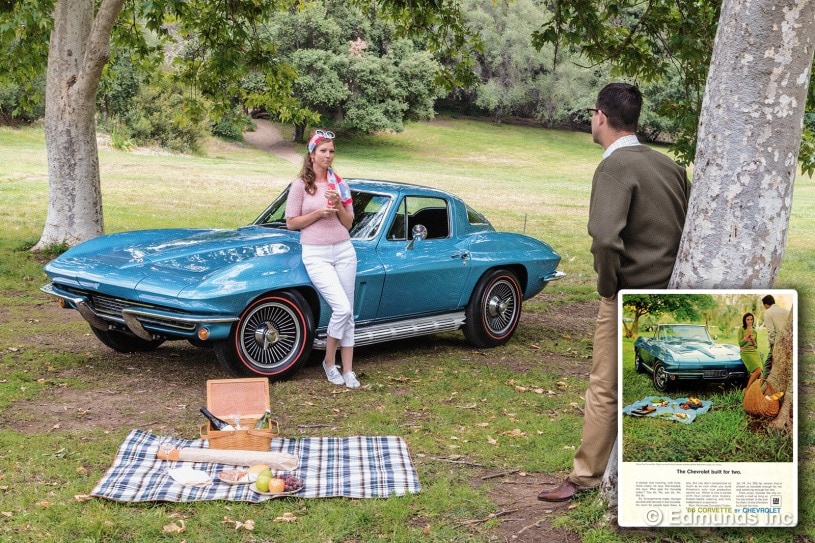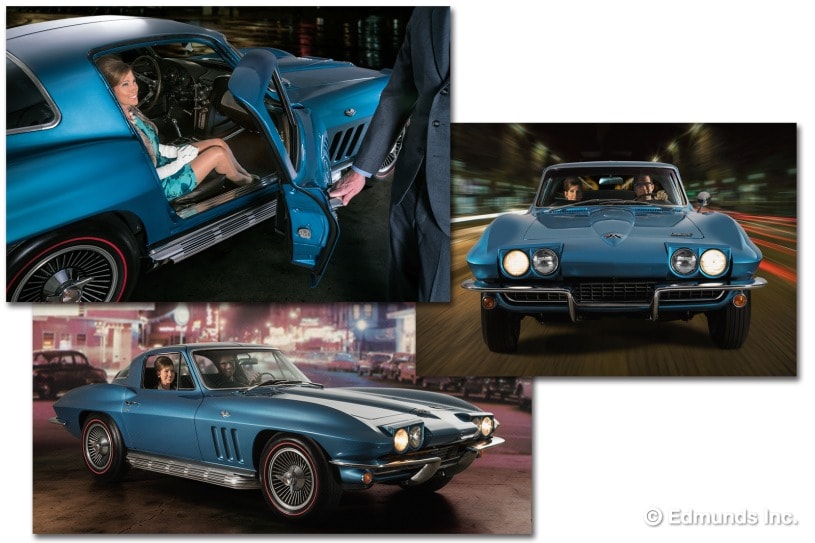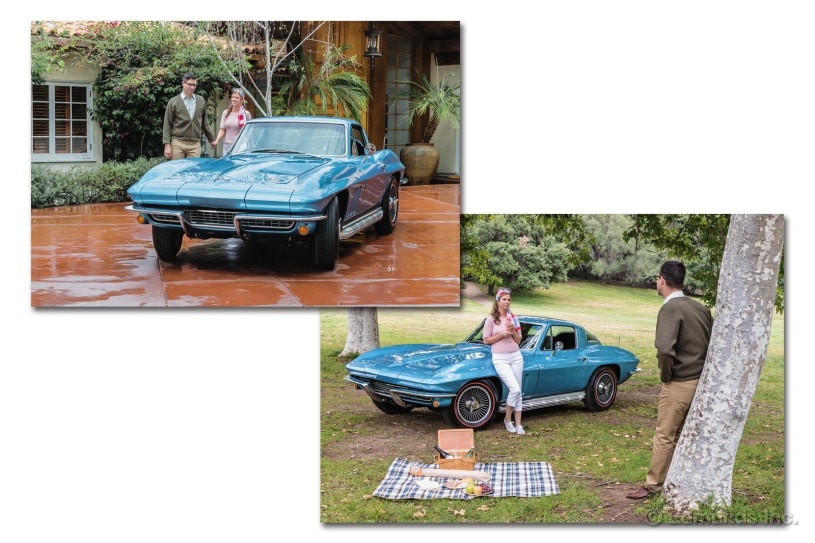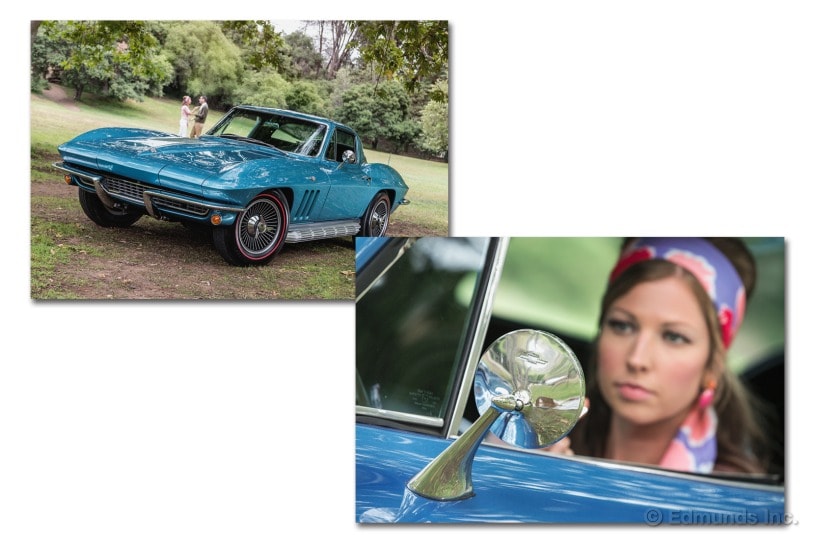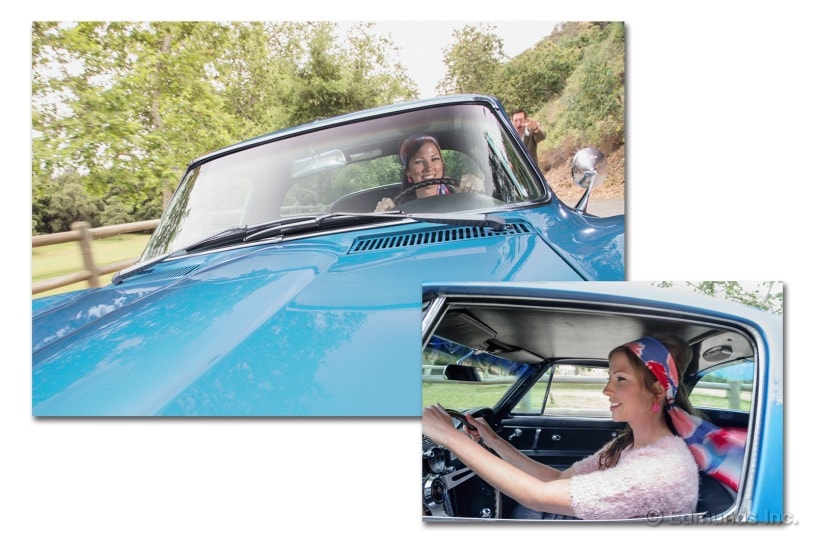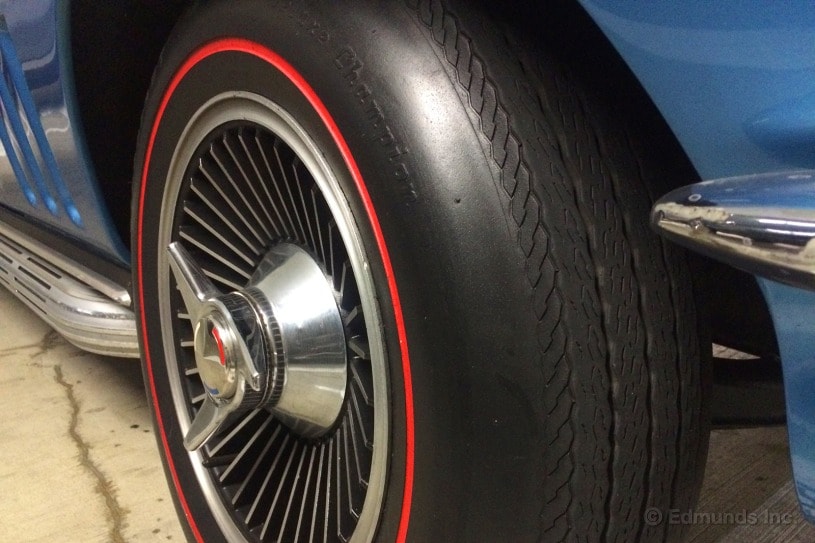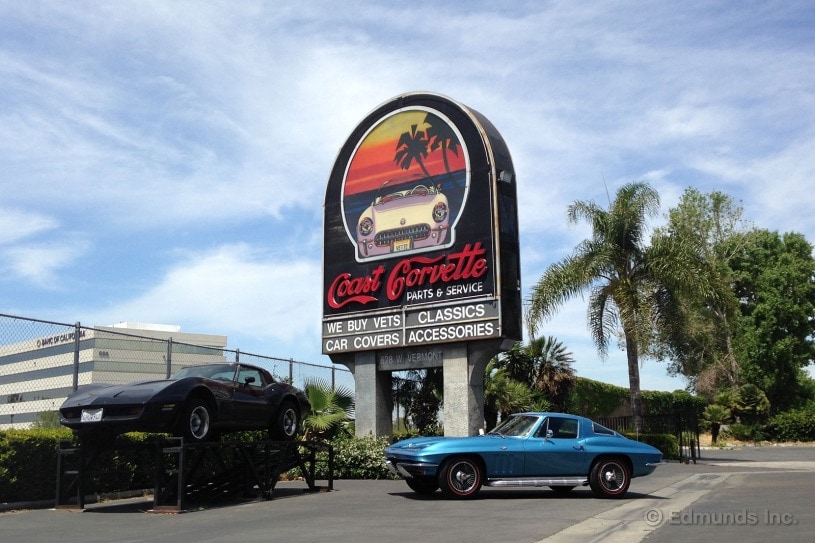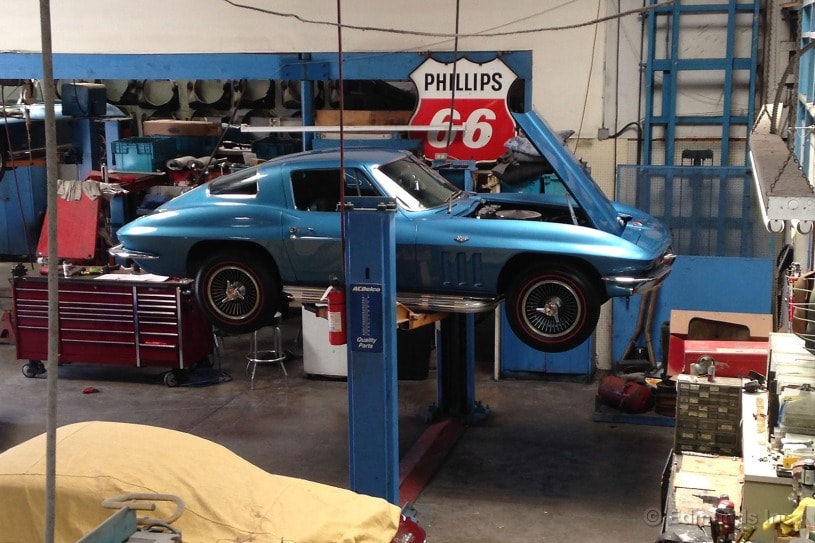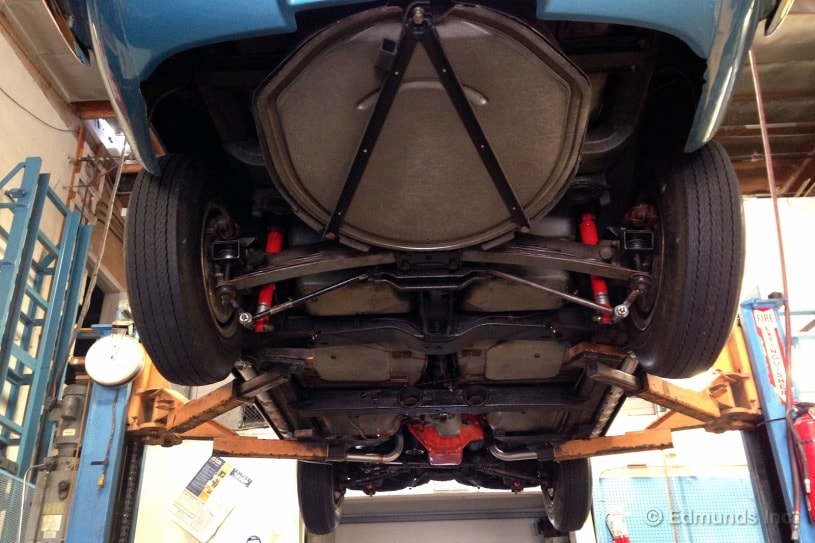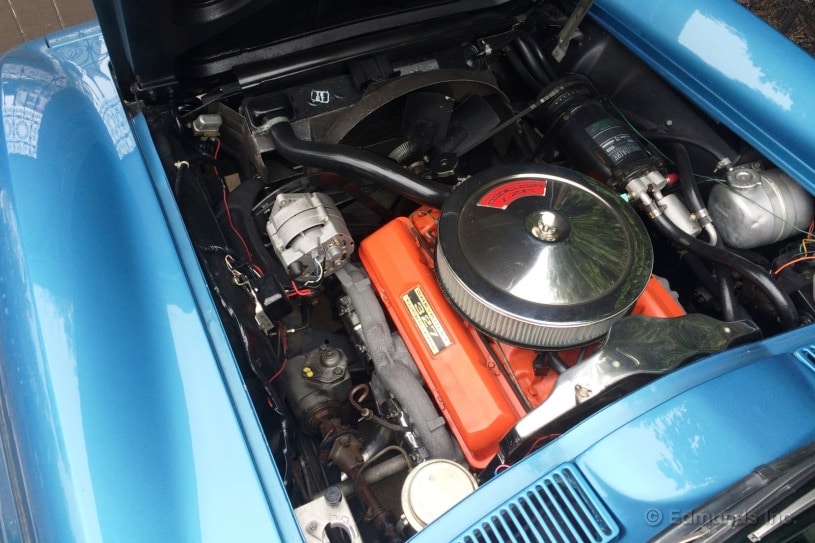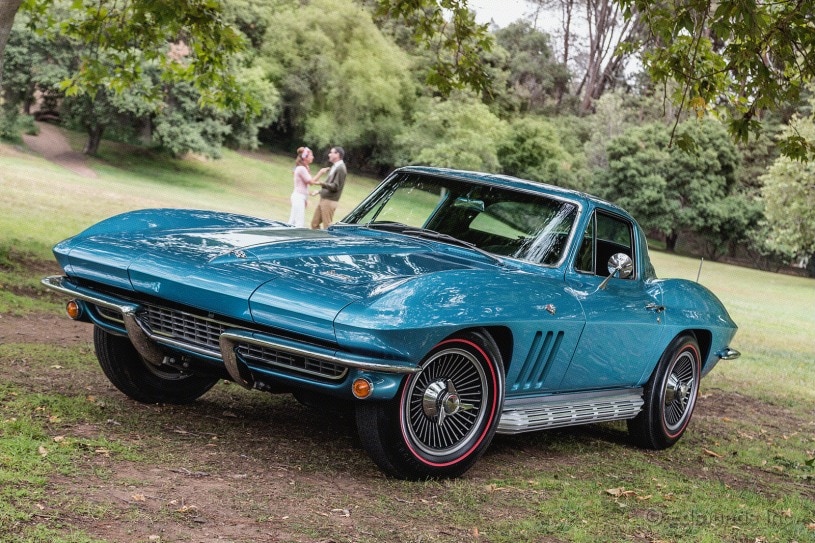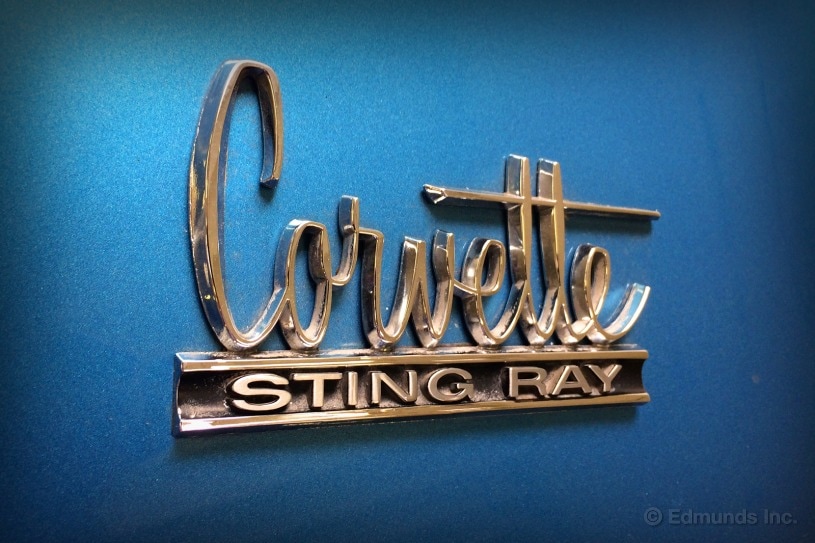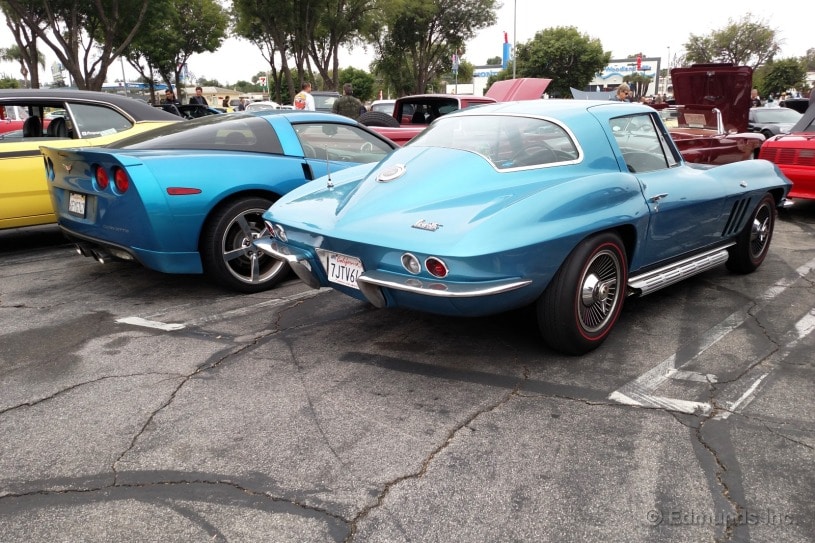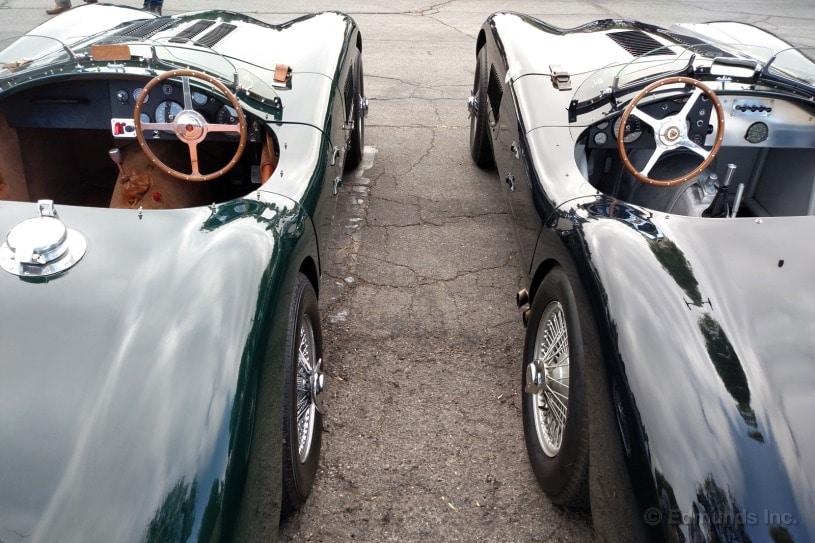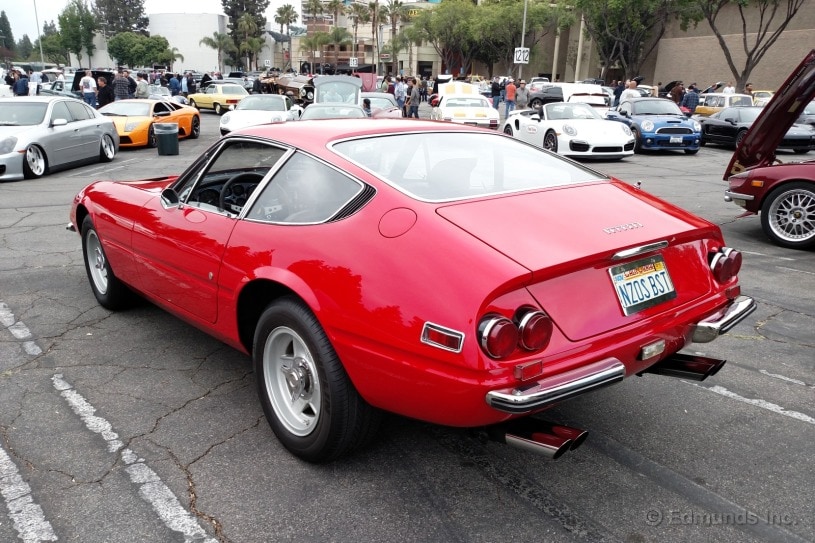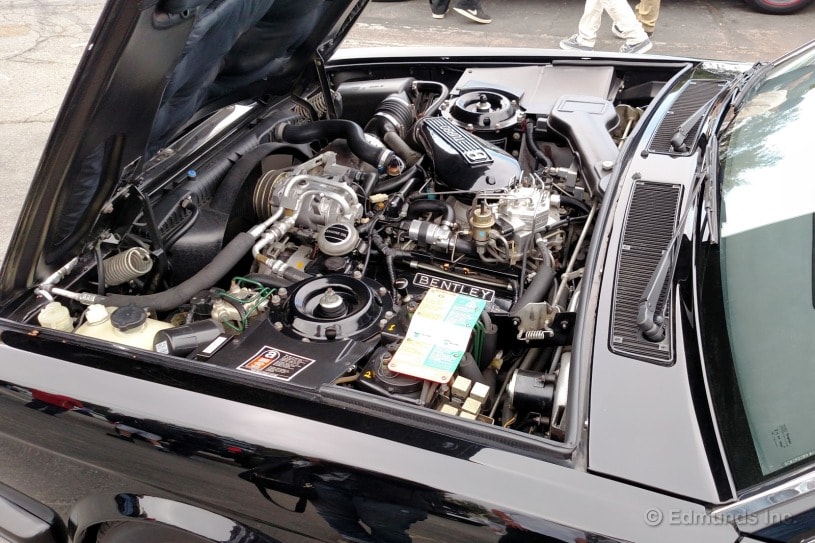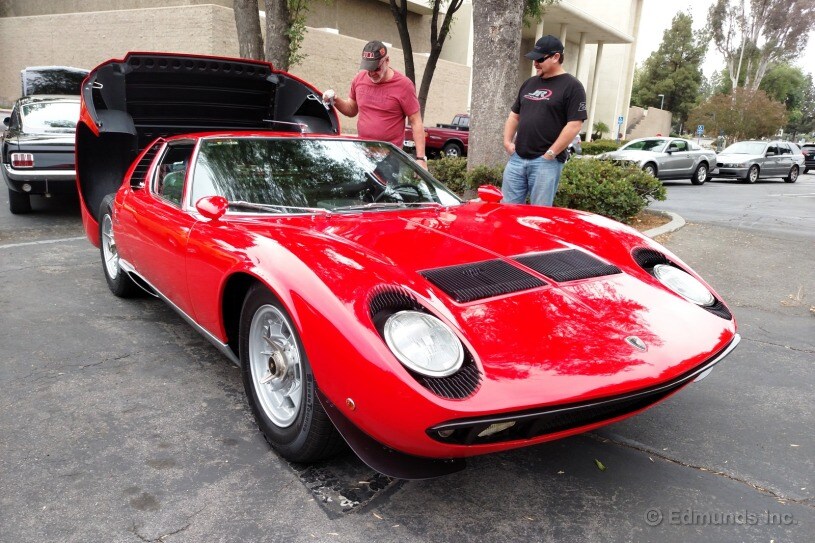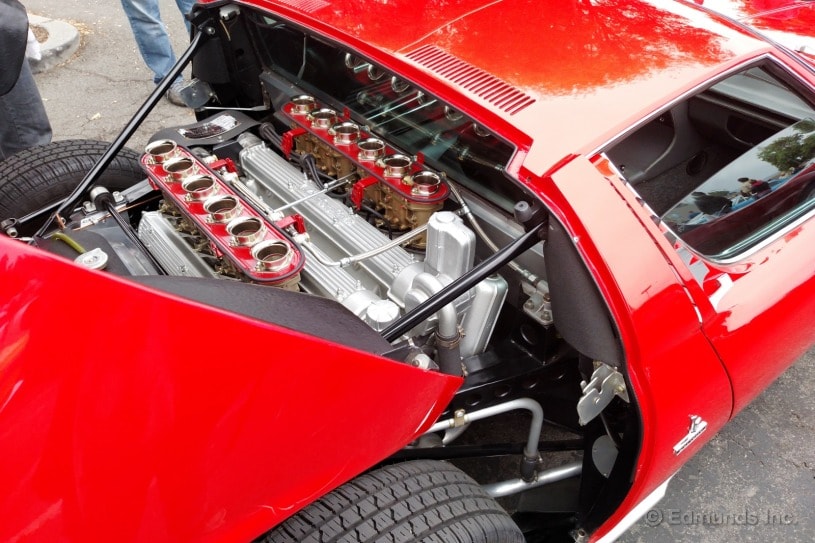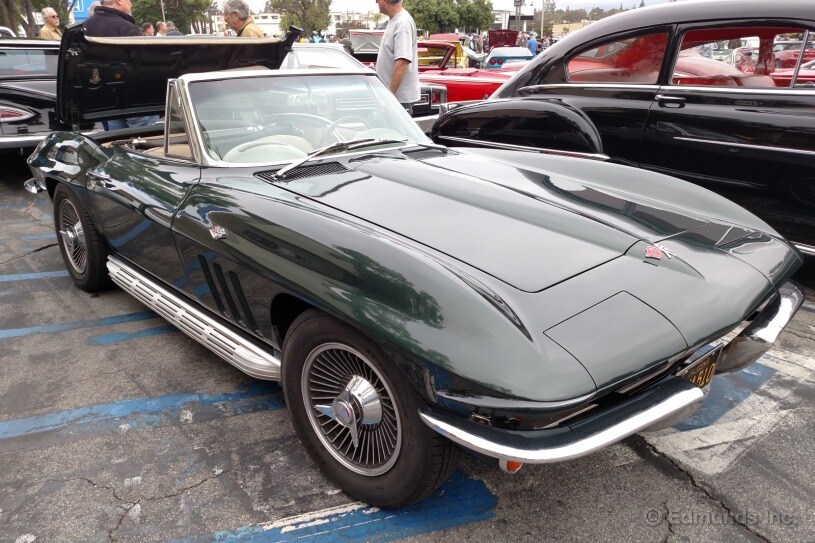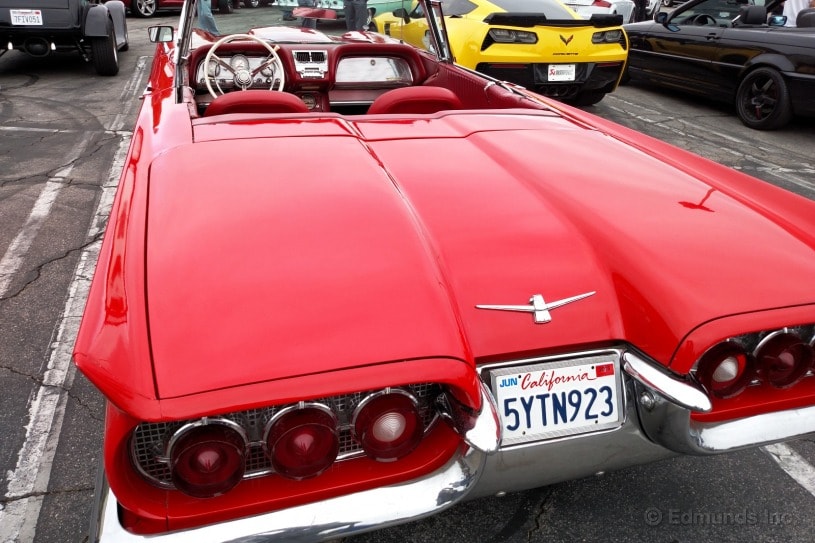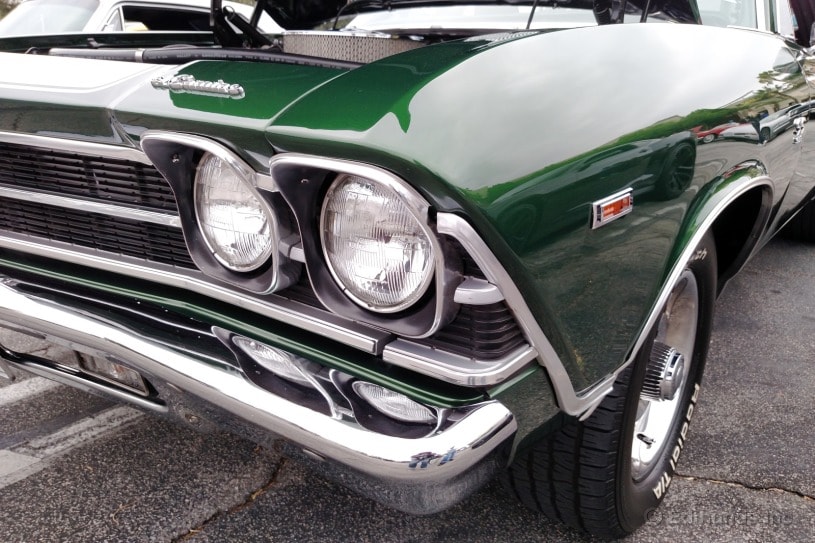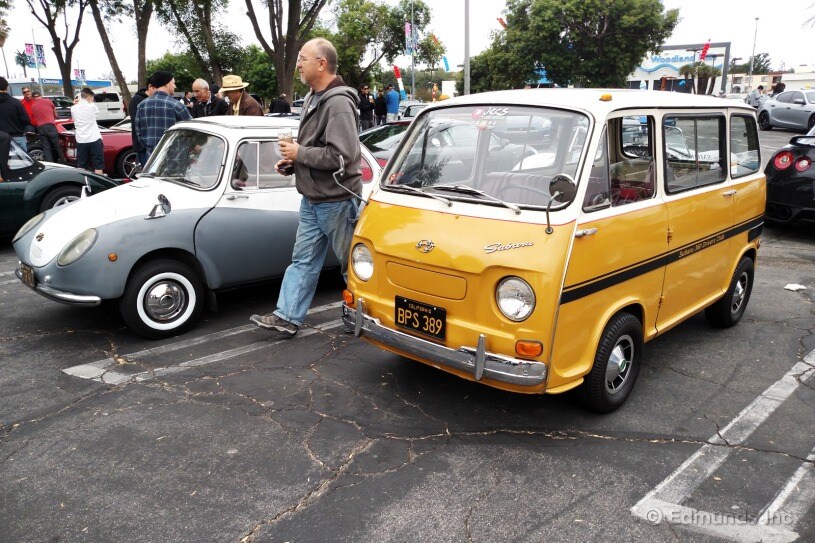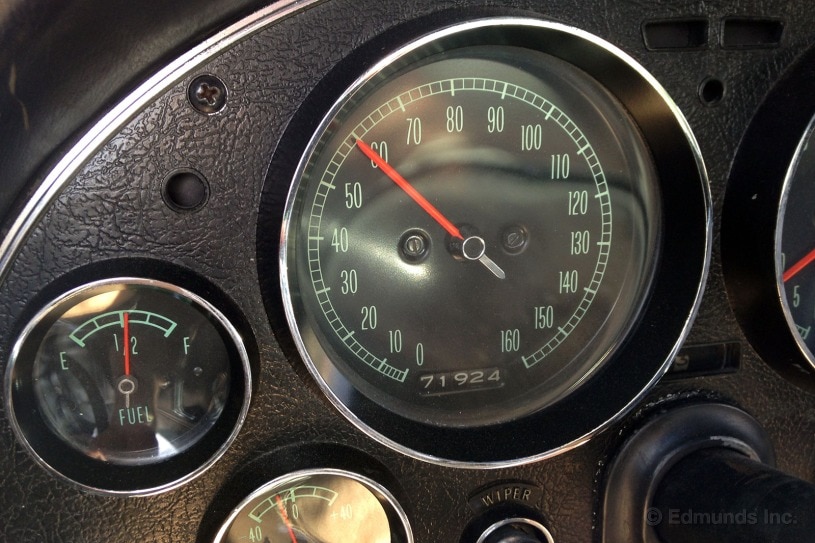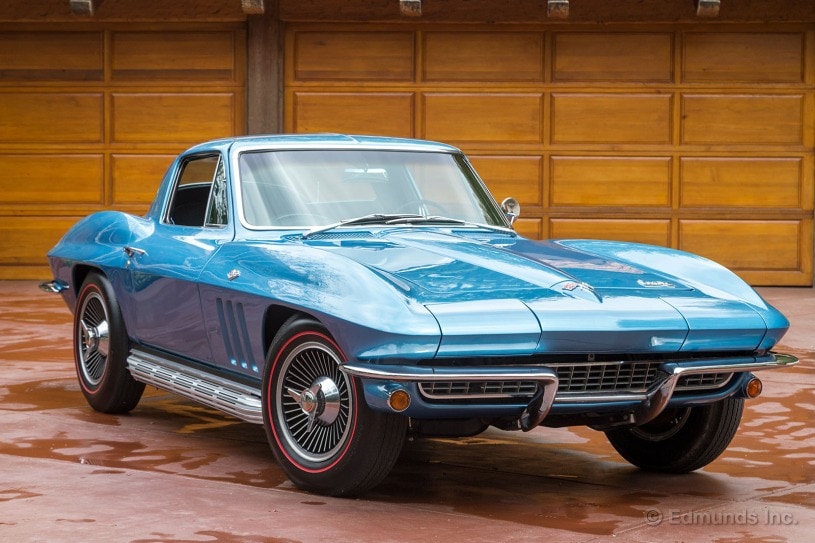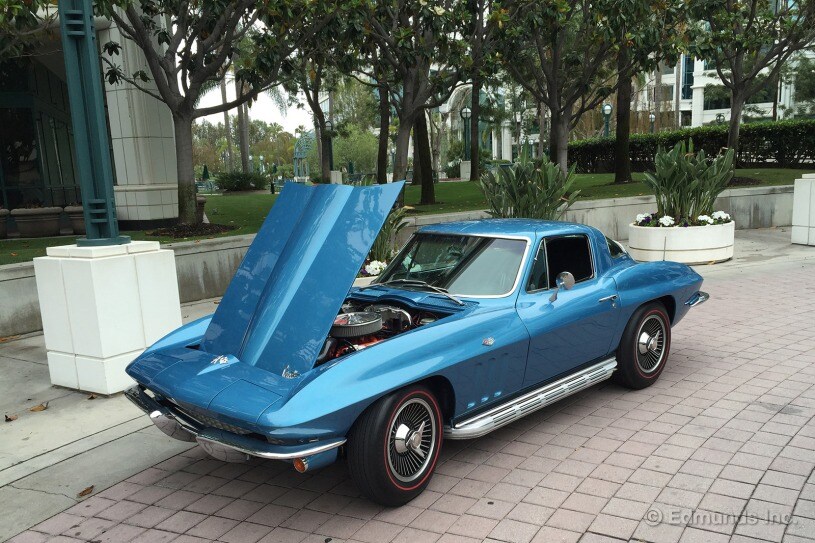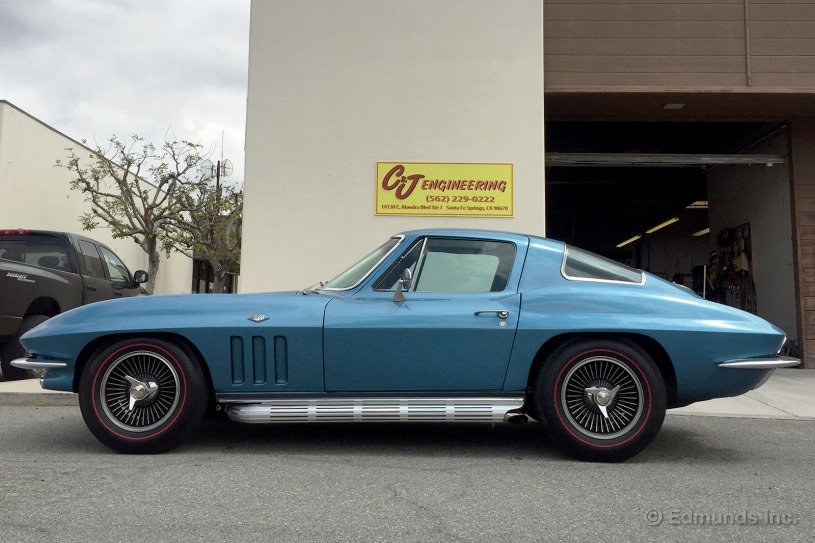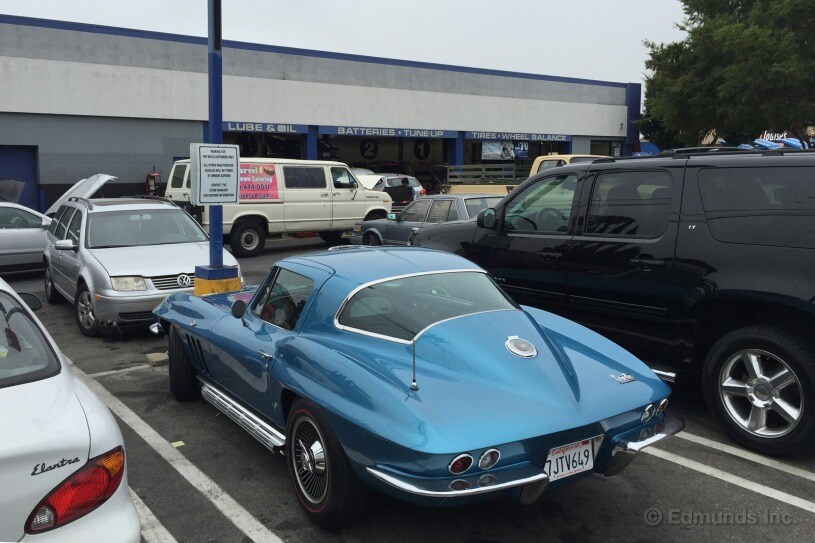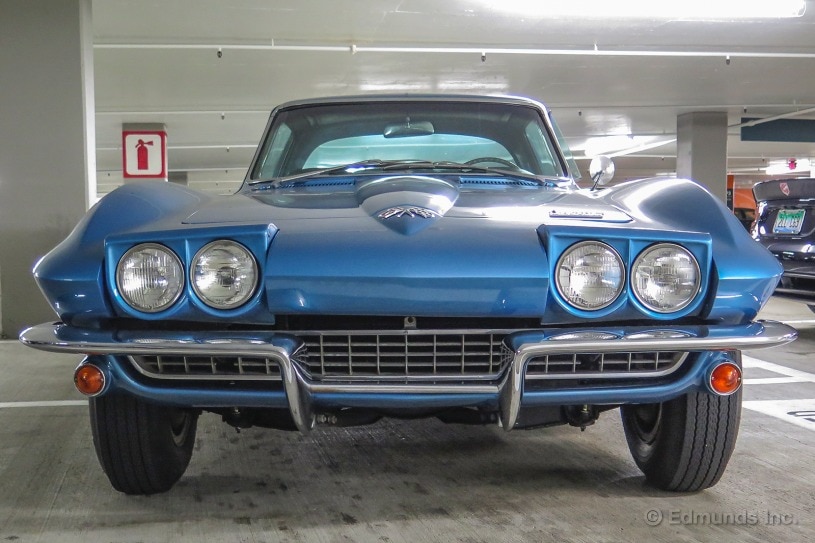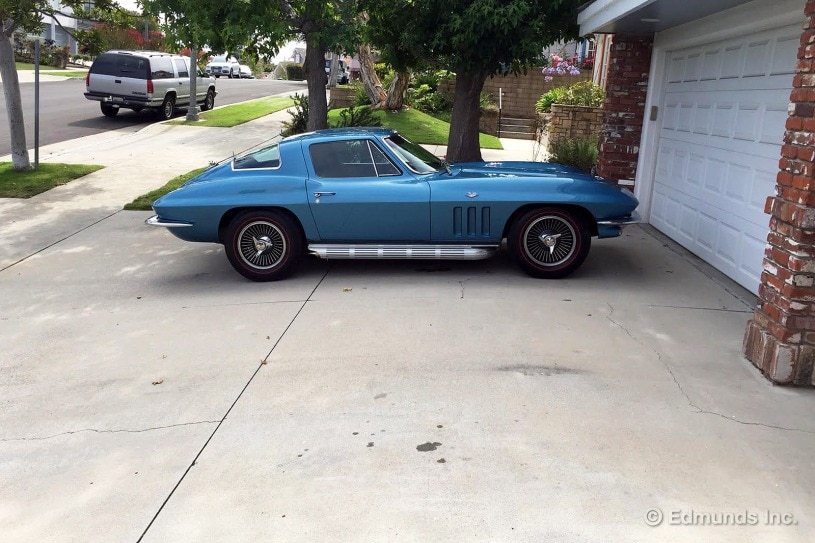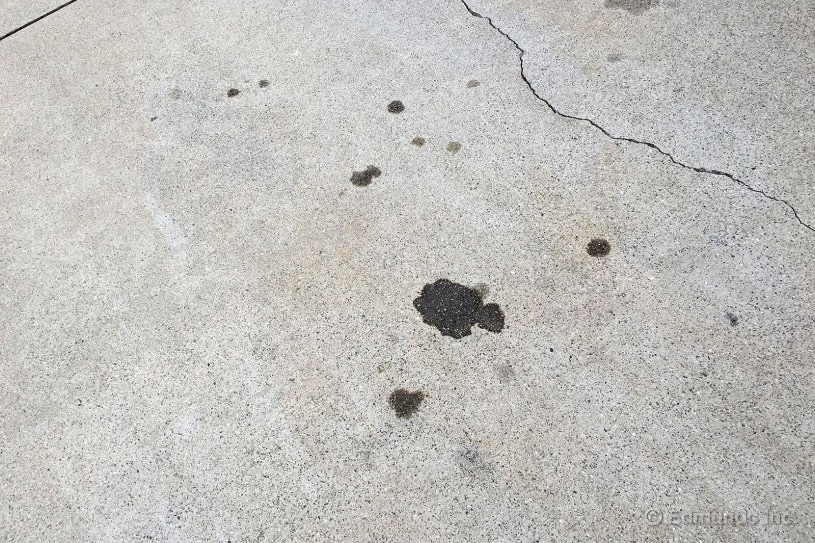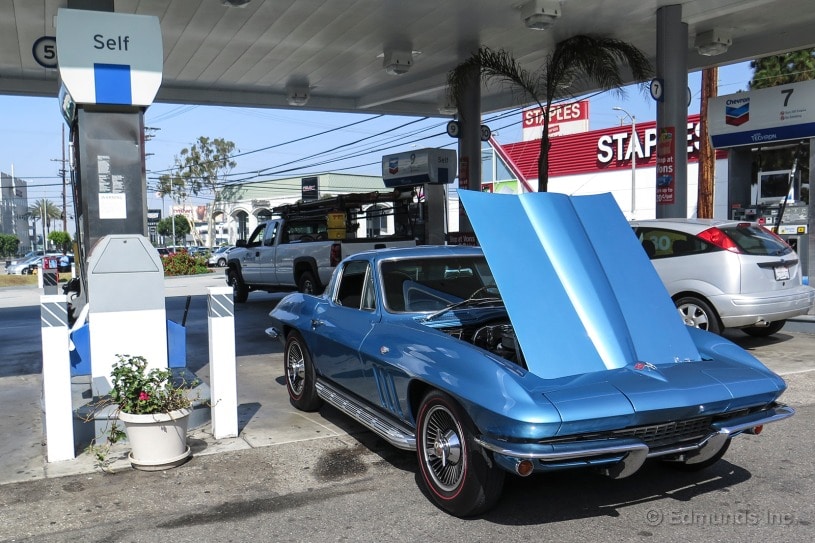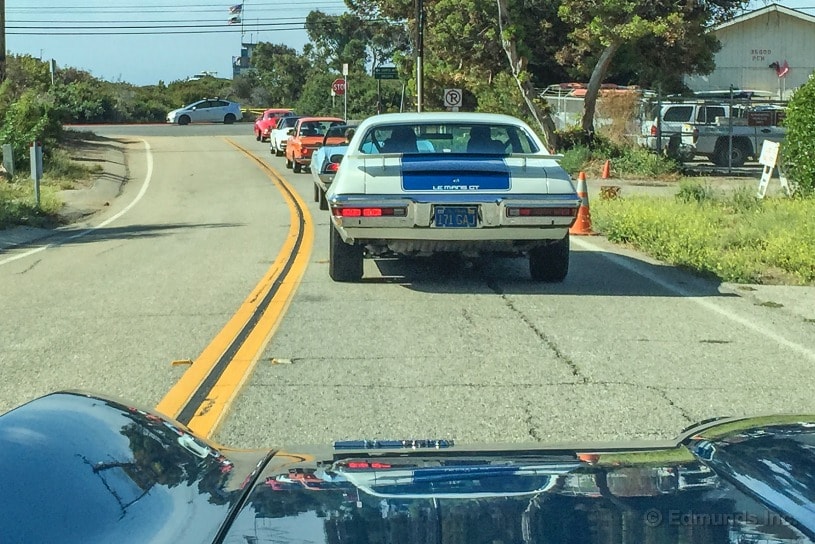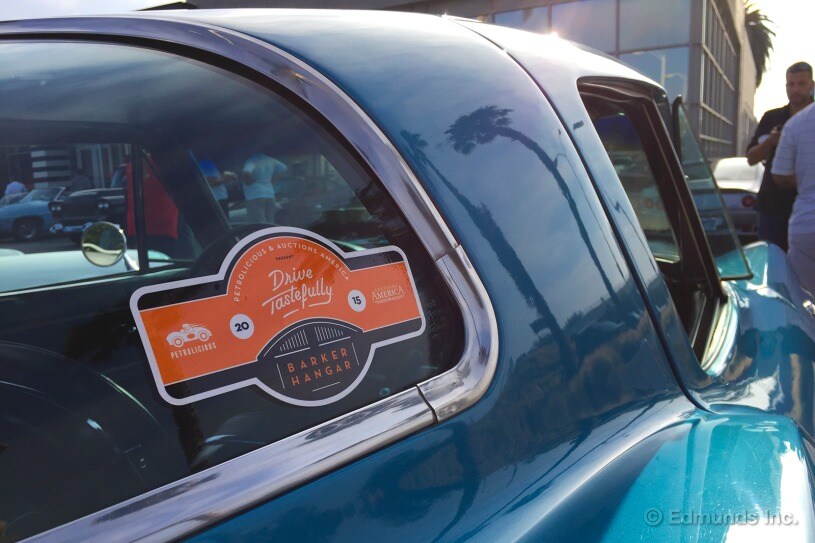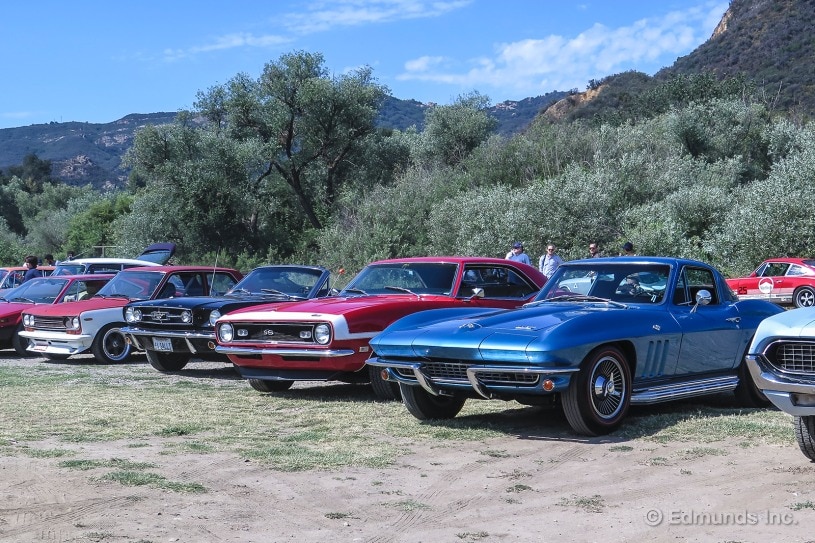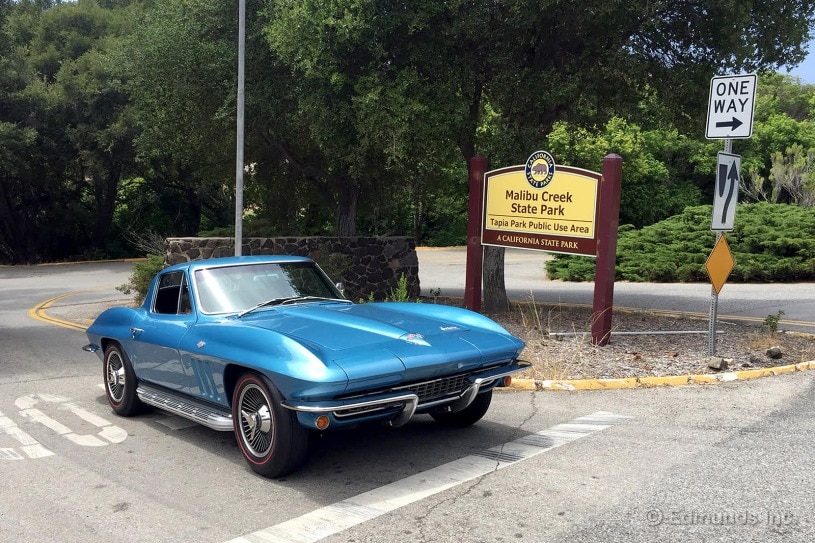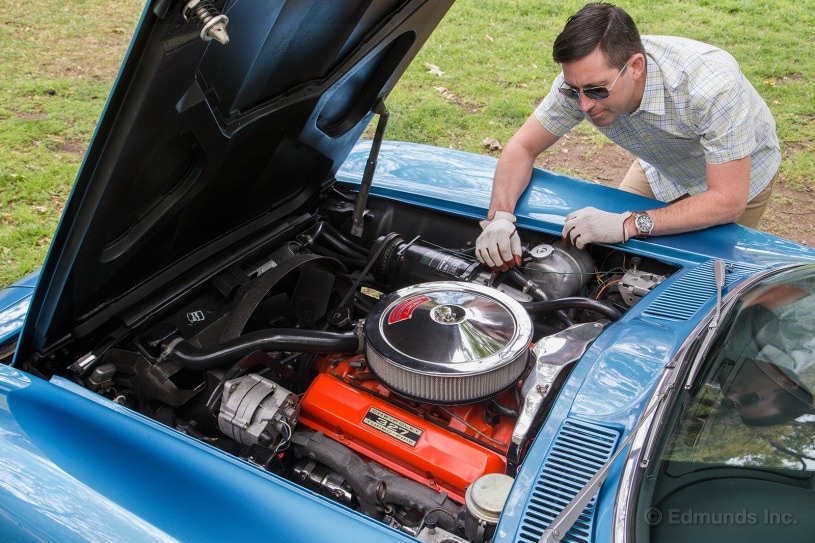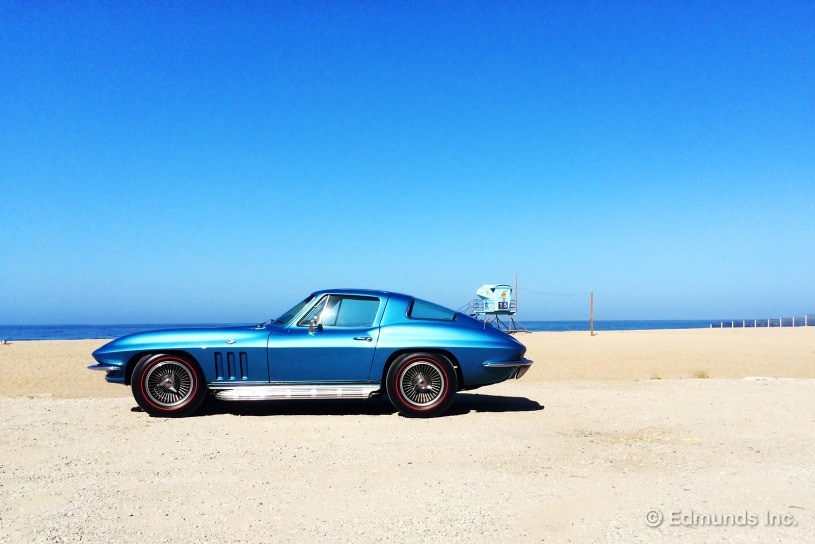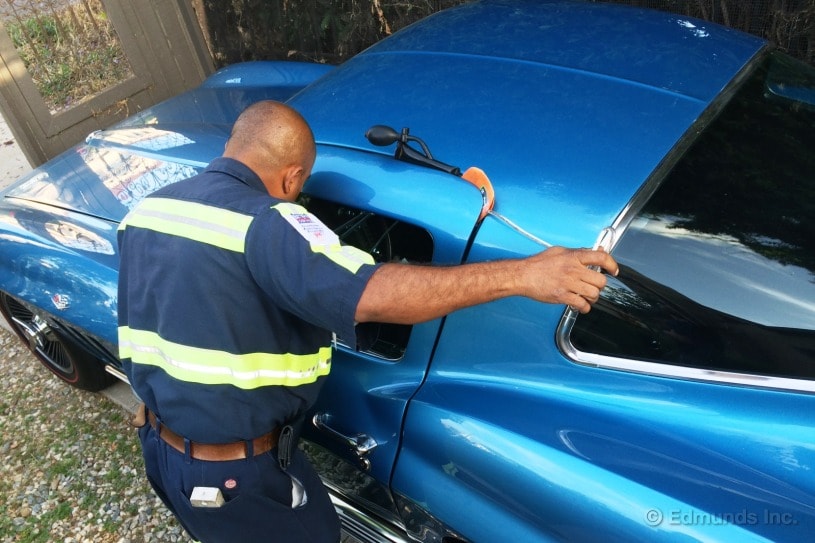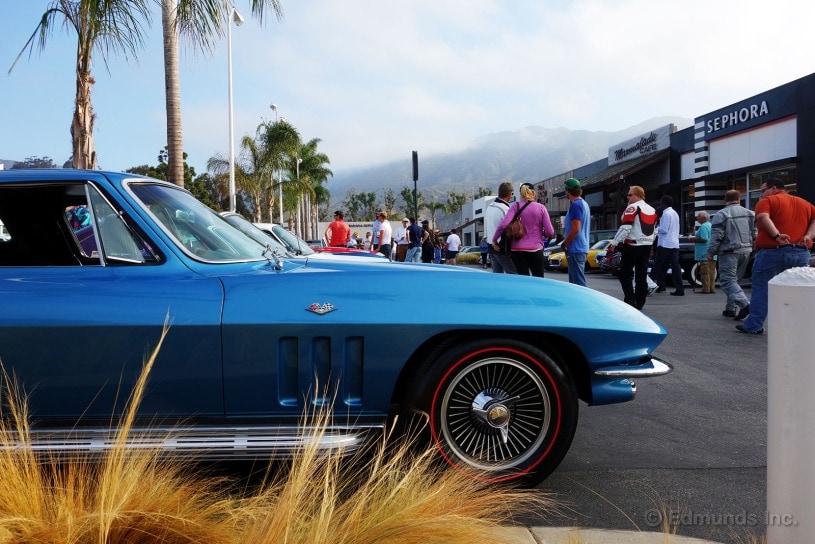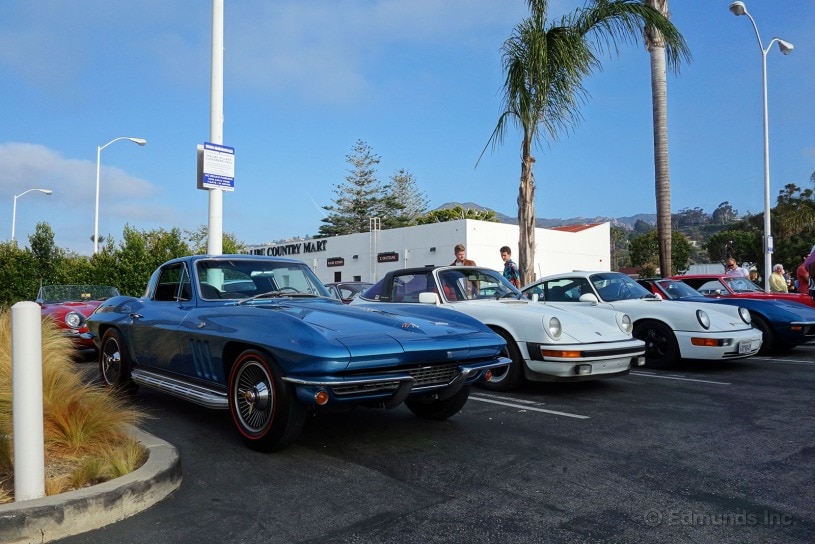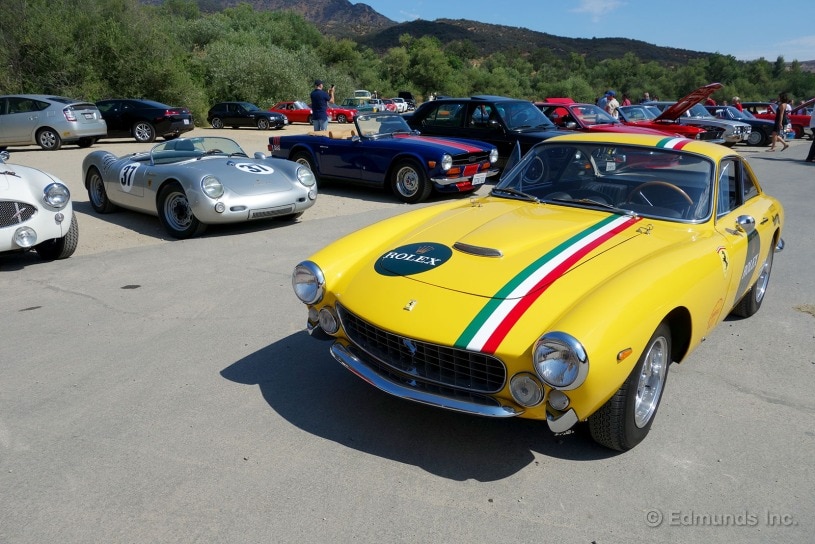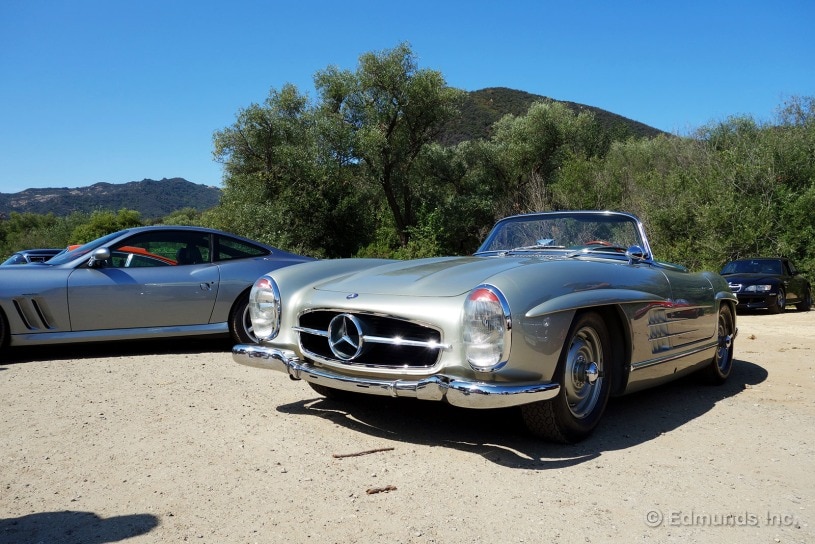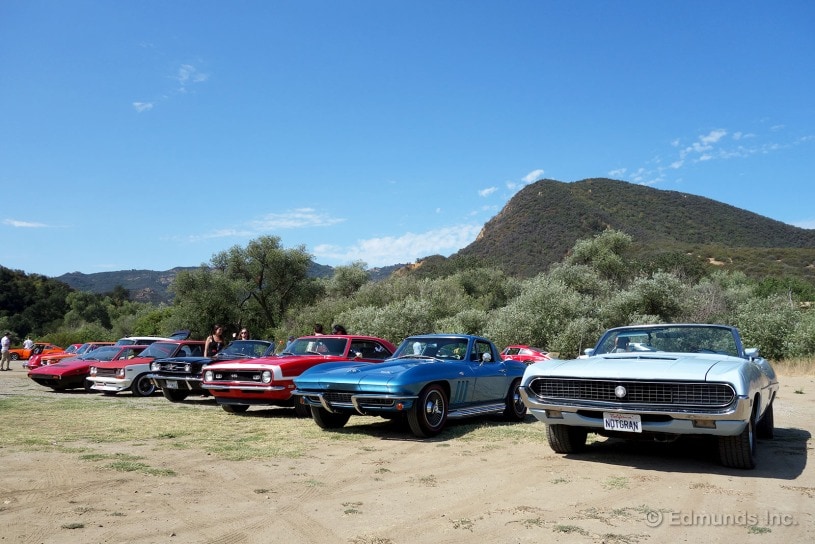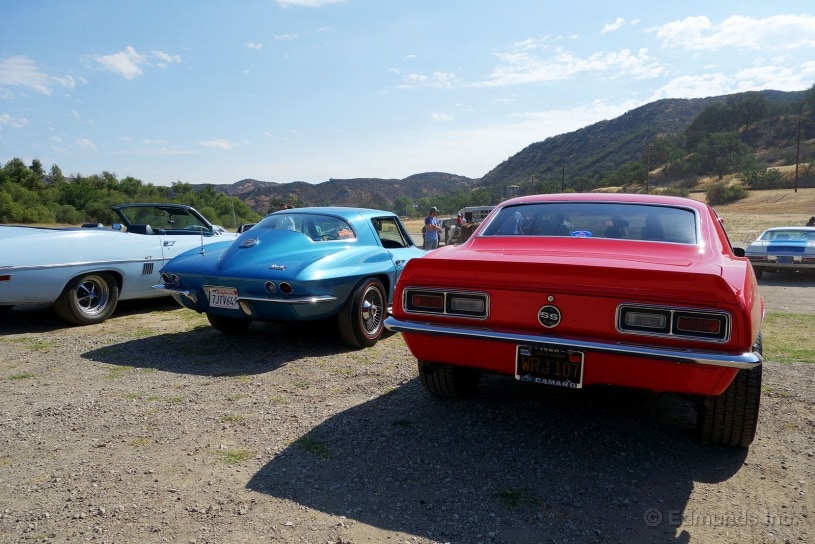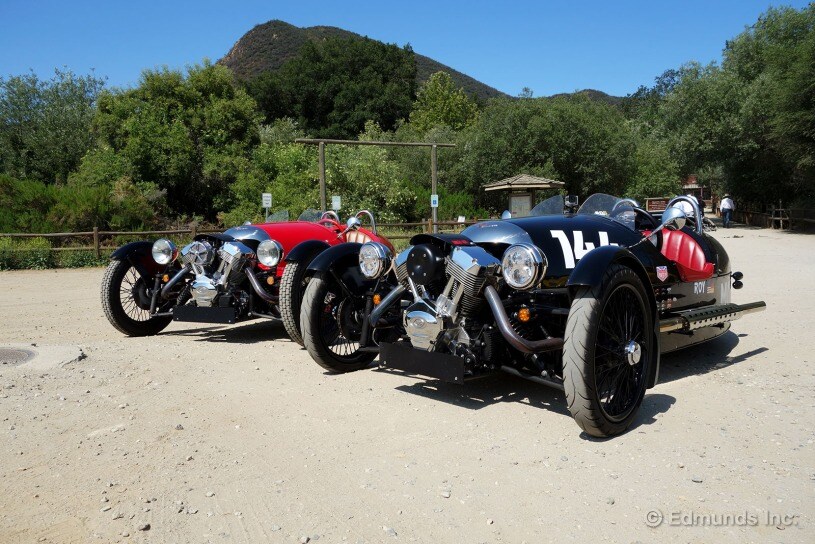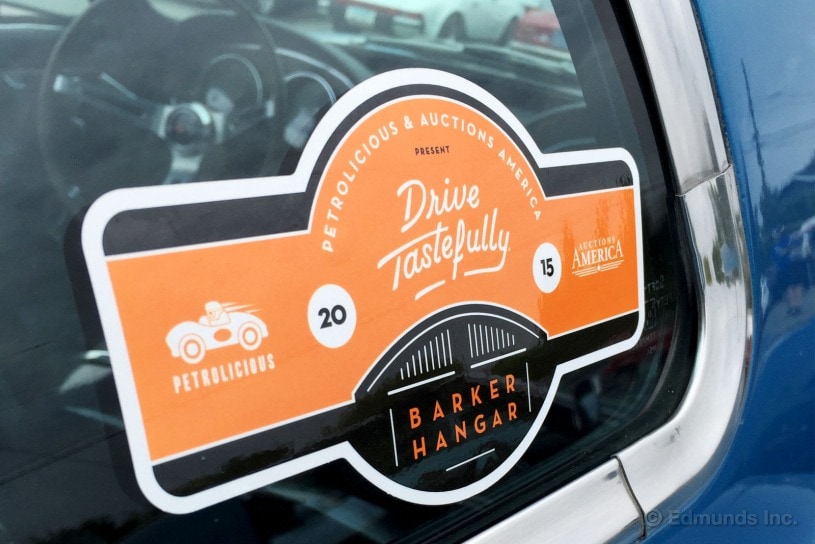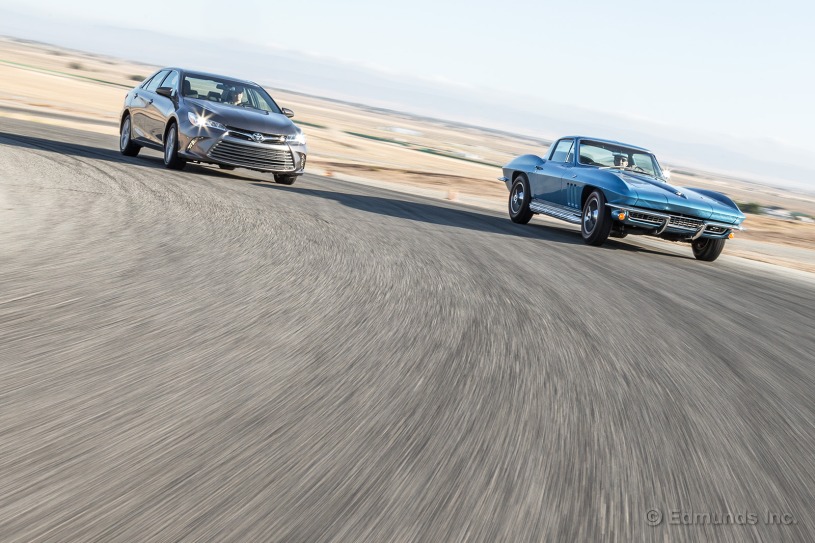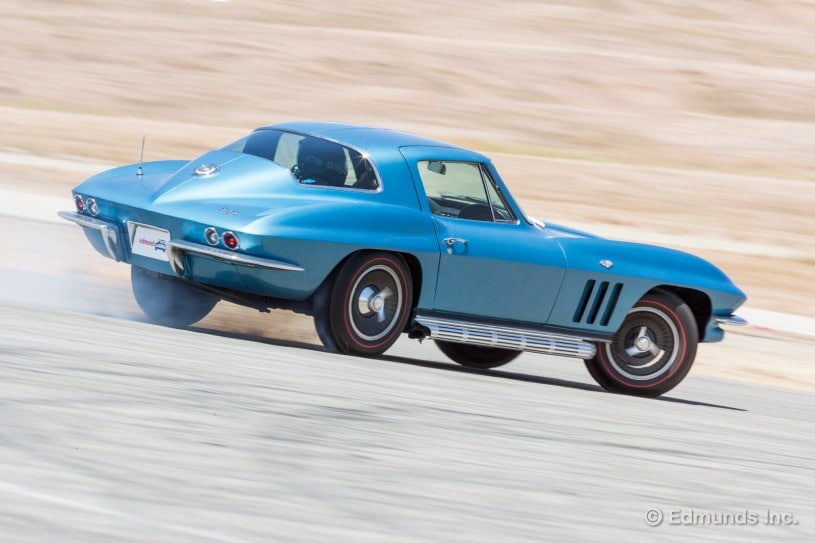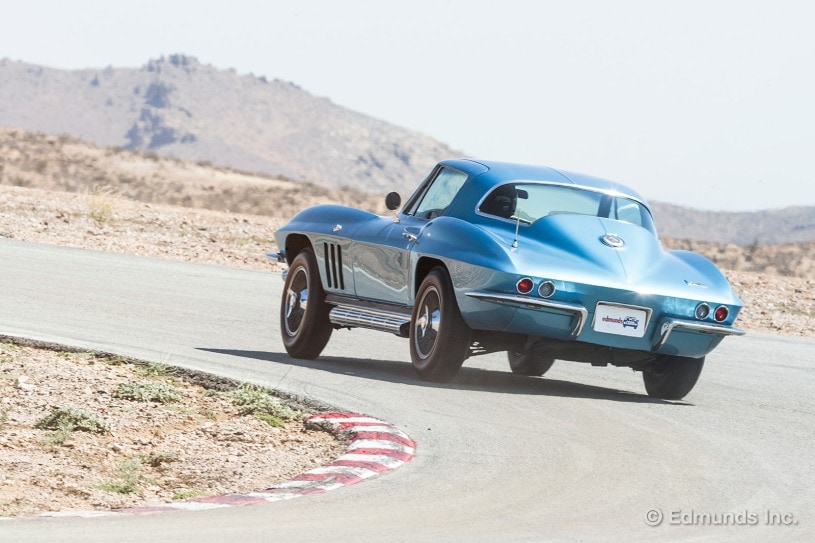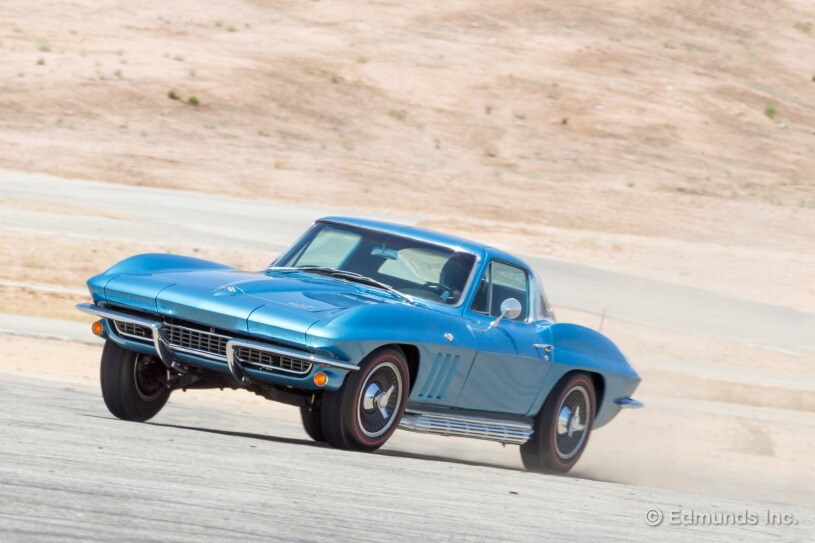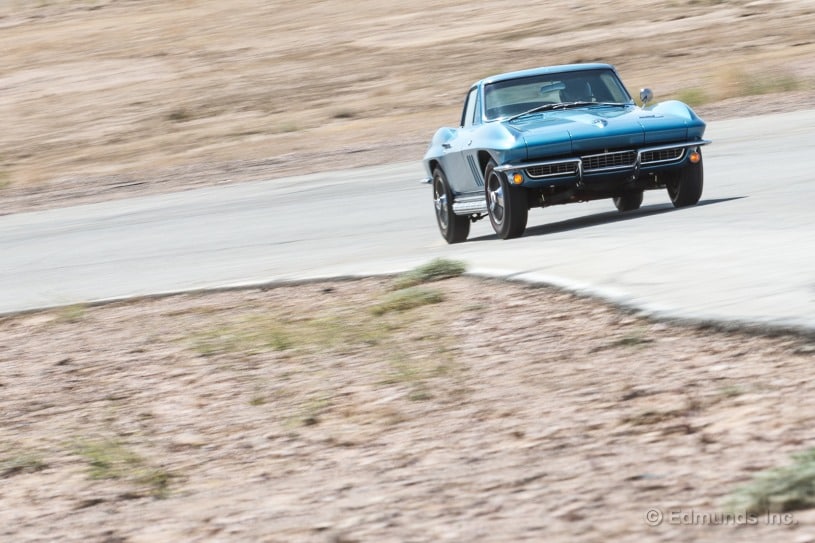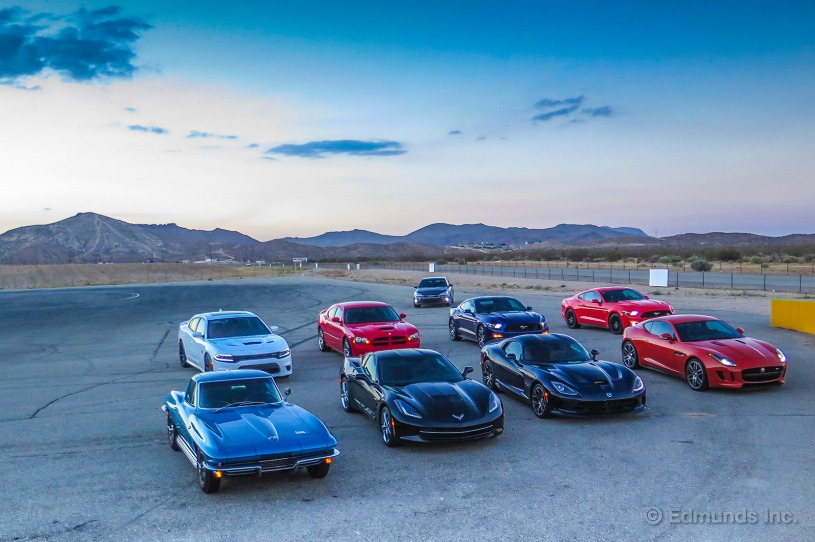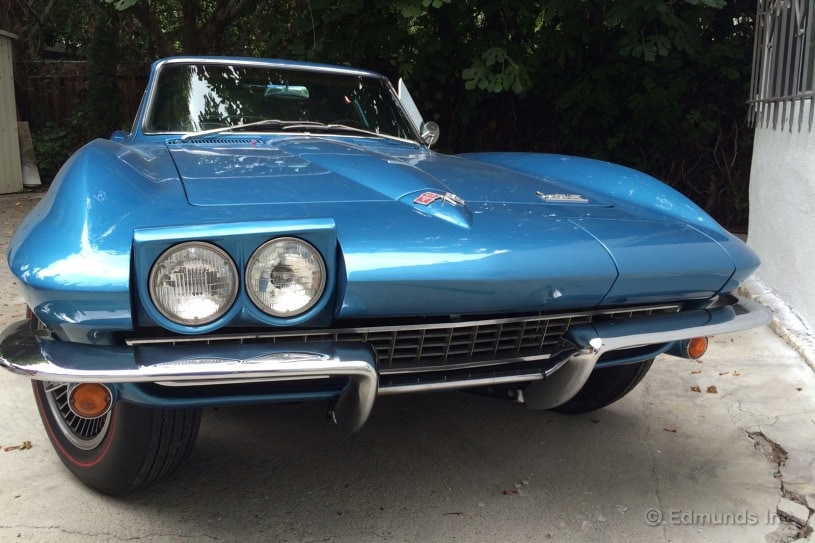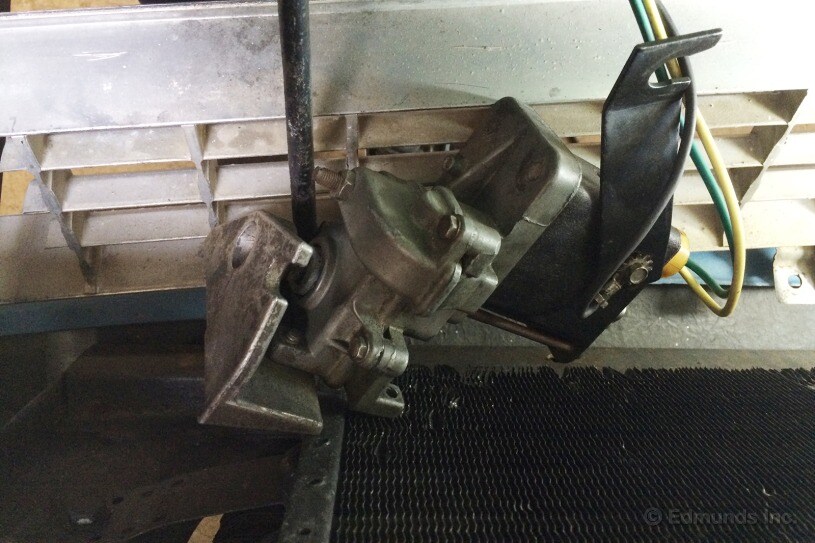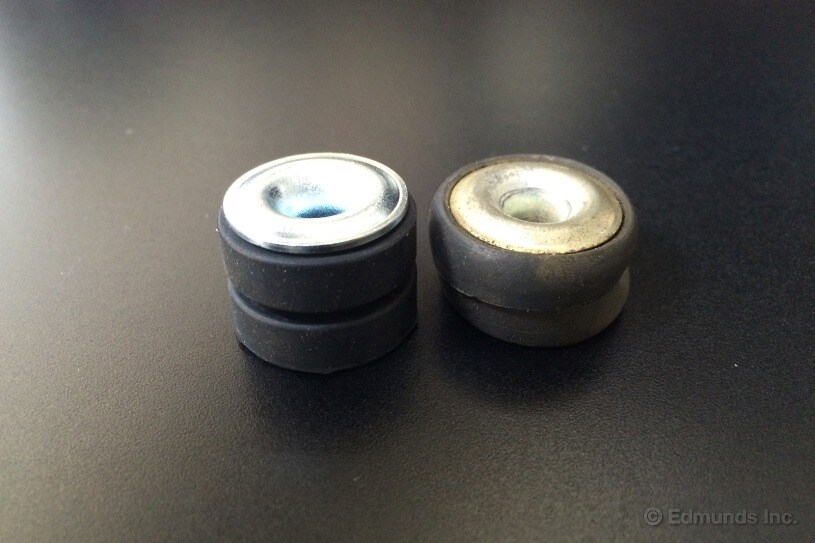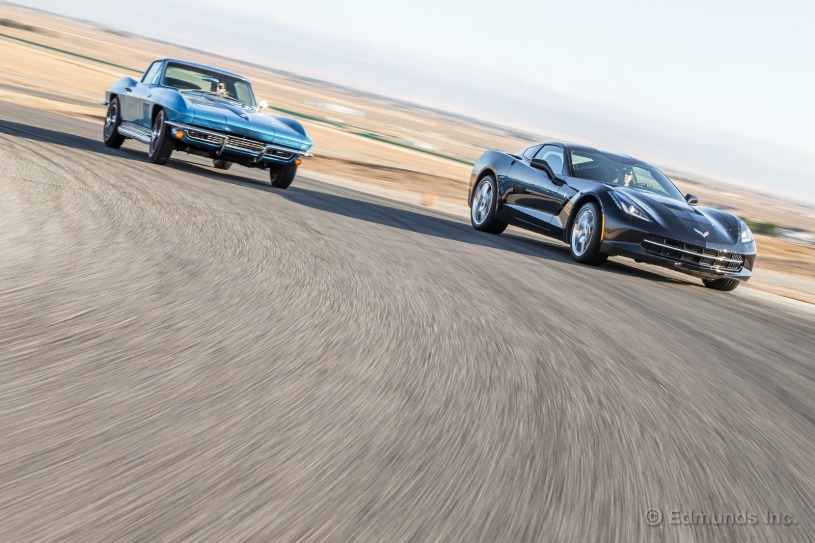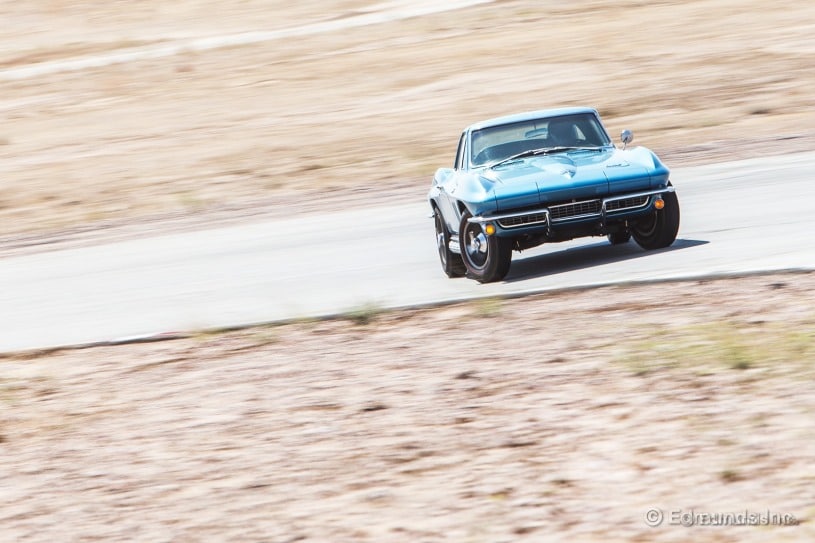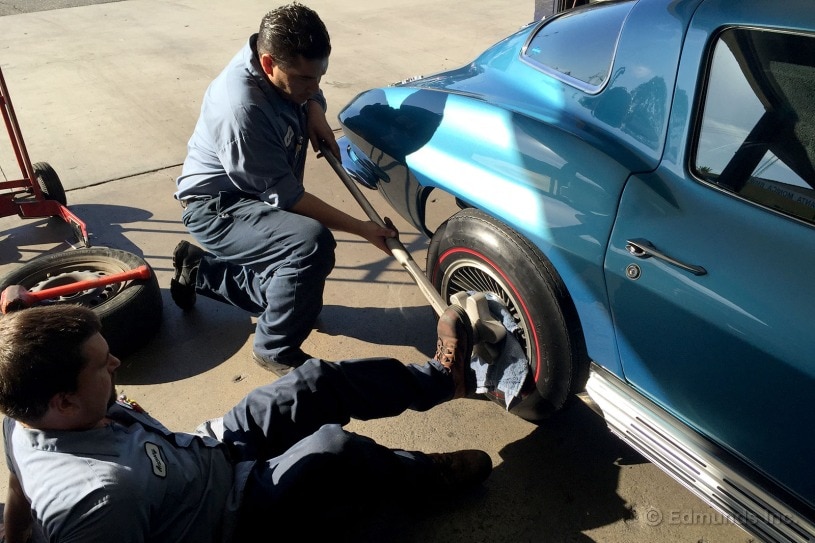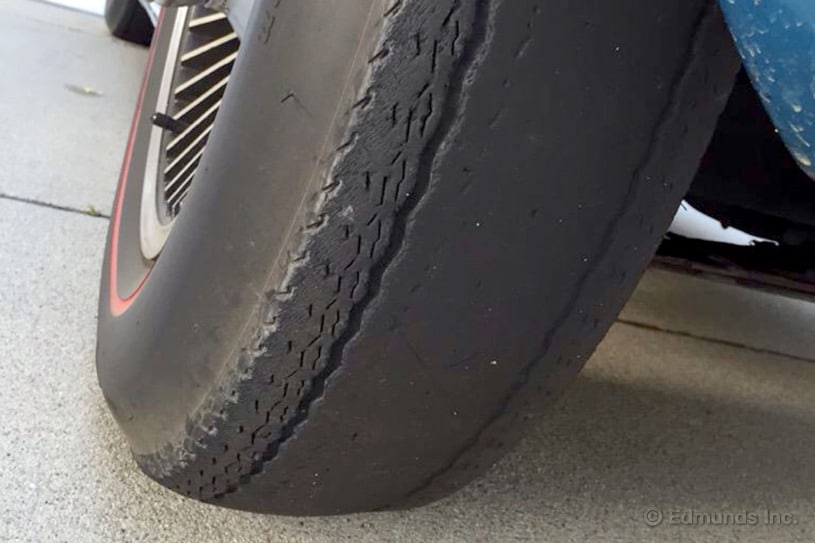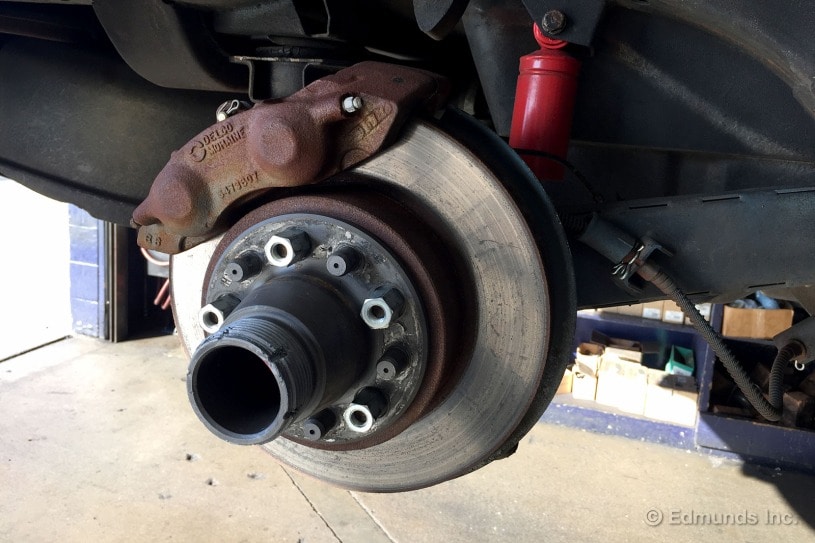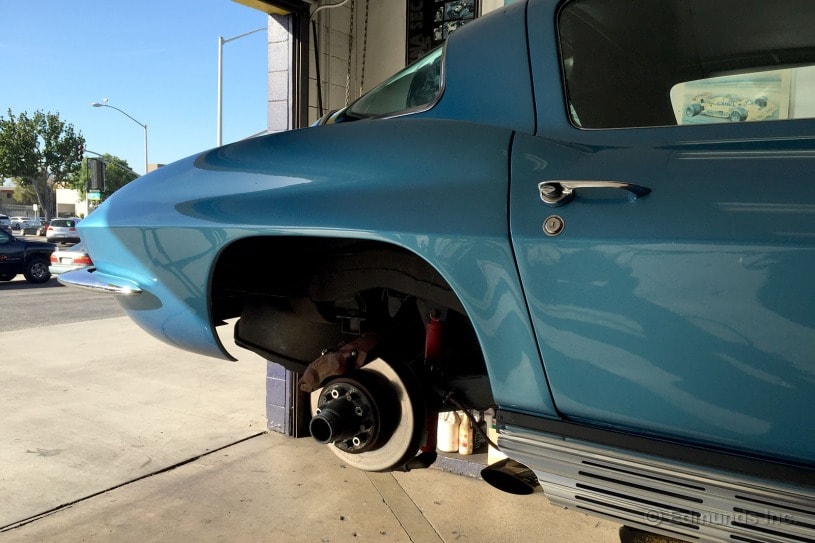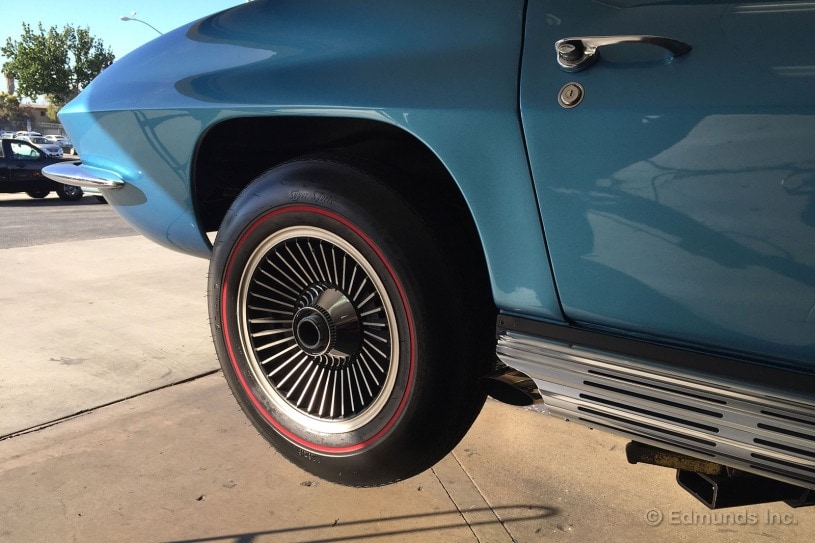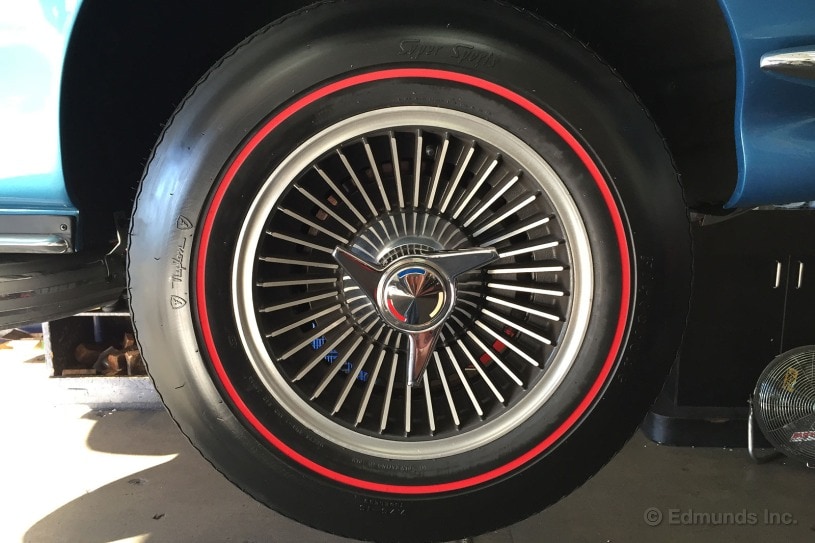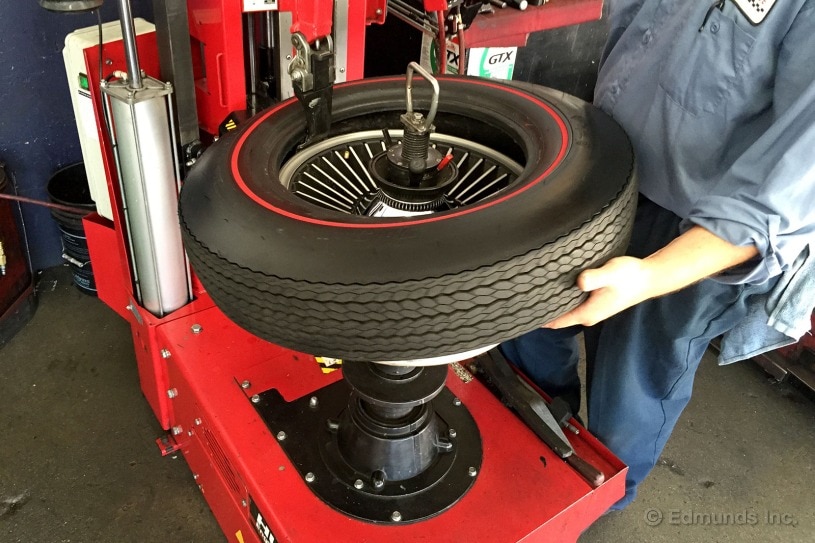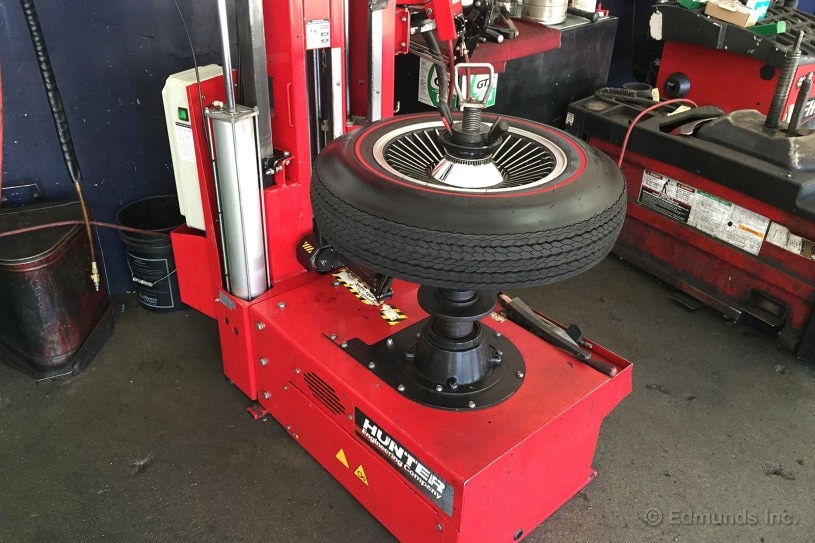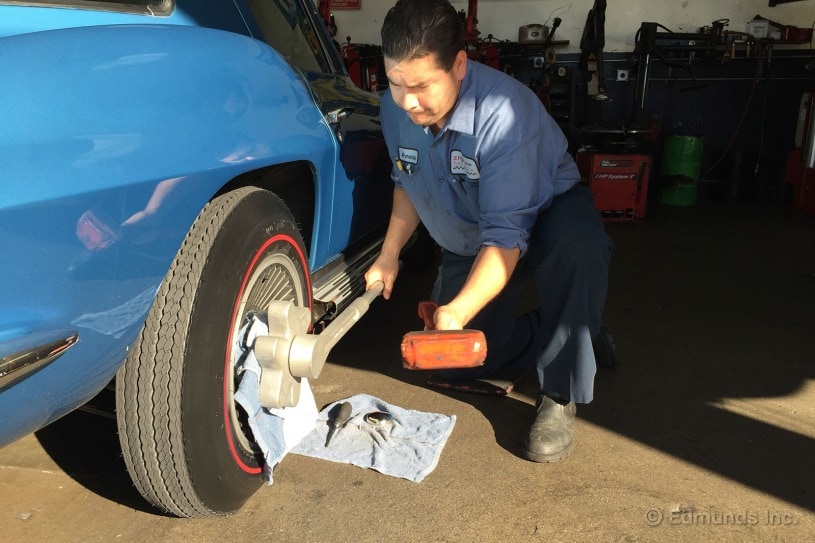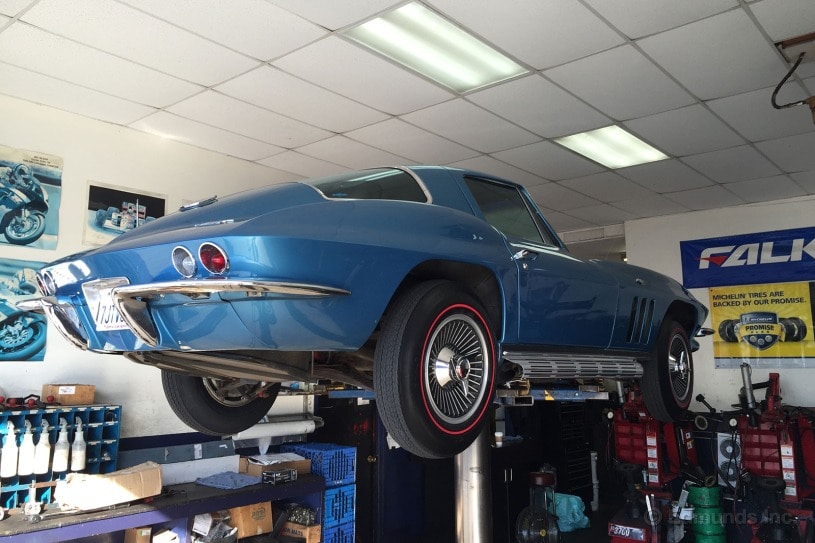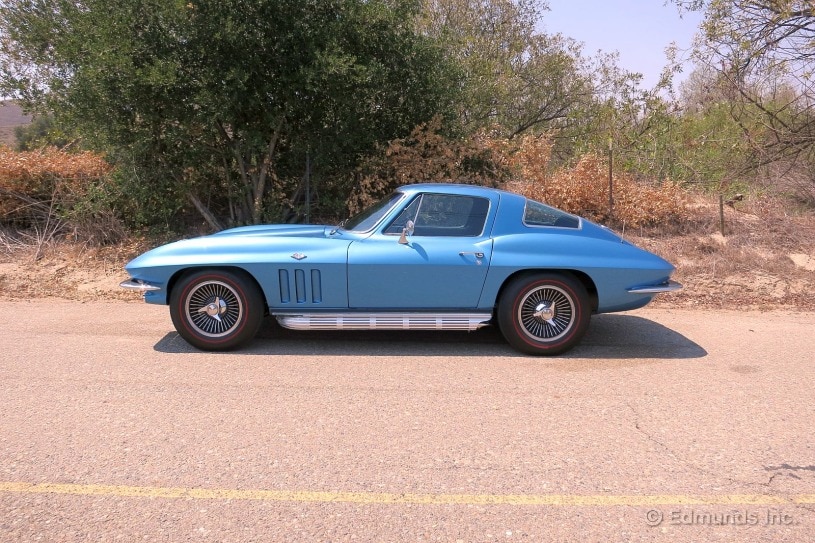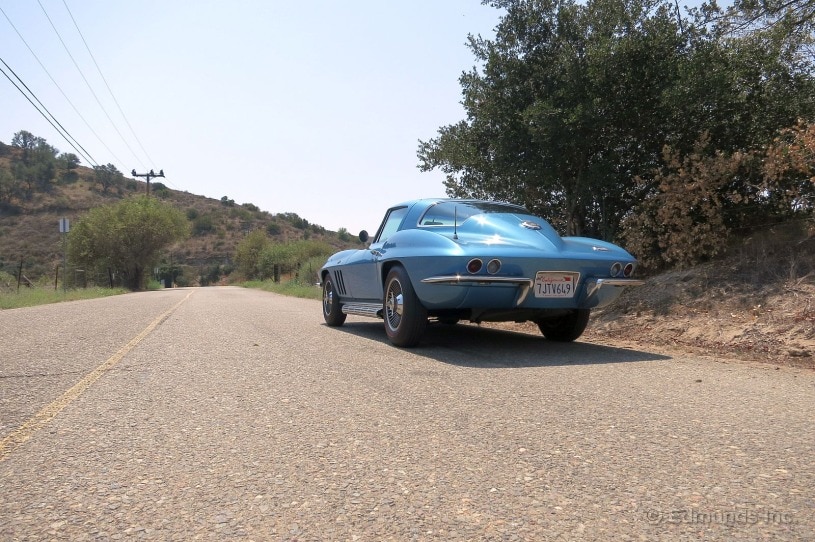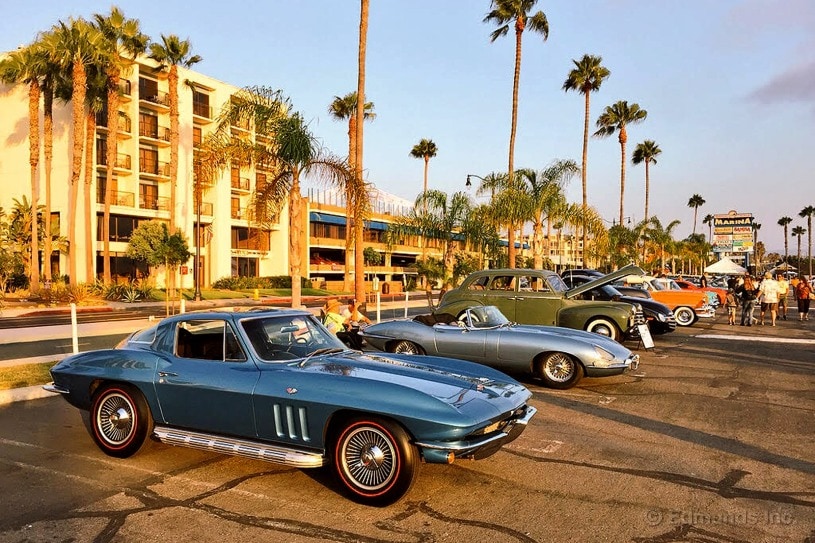1966 Chevrolet Corvette: What's It Like to Live With?
Read the latest updates in our long-term road test of the 1966 Chevrolet Corvette as our editors live with this car for a year.

What do you want to know about?
- Introduction
- Photographing a Pop Icon
- Taking Delivery (Video)
- Handle With Care
- Safety First
- LS What?
- Photographing a Pop Icon, Video Edition
- Smells Like Victory
- Supercar Sunday
- Broken Speedo
- Owning a 1966 Corvette
- Why Carburetors are Obsolete
- Rebuilt the Carb, But Trouble Persists
- Back In Action With New Battery, Alternator
- Can't Night-Cruise the Boulevard
- It Leaks. So What?
- Keeping Up With Maintenance
- Driving Tastefully at the Vette's First Rally
- Using It Like A Camry
- Smartphone-Size Battery Pack Revives Sting Ray
- Performs Great on Our Test Loop
- Local Idiot Locks Key Inside
- On Driving Tastefully (For the First Time)
- A Classic in Good Company
- Would You Rather a Camry?
- Huge Fun, Once You Stop Being Afraid Of It
- Old Dog Shows Off Its Tricks
- Headlight DIY FTW
- Ray Vs. Ray
- Performance Tested — The Old Girl Gets to the Driver's Heart
- The Cost of Fun
- Fantastic First Date
- From Open Road to Office Space
Introduction
What Did We Get?
In 1966, just as in 2015, every Corvette was rear-wheel drive, V8-powered and available as a coupe or a convertible.
After much debate and about six weeks of research we decided to pursue a Nassau Blue (the most popular color in 1966) coupe powered by the base and most popular engine, a 300-horsepower, 327-cubic-inch small-block with a 10.5-to-1 compression ratio, and a four-speed manual transmission.
Chevy offered four engines in 1966: two 327 small-blocks and two 427-cubic-inch big-blocks. The other three are more powerful and more desirous, which of course means they cost more. We also knew that the higher 11.0-to-1 compression ratio Chevy used in the optional 350-hp 327 (L79) and top dog 425-hp 427 (L72) would make daily use of the car difficult on California's modern 91-octane gasoline.
After studying the market it was concluded that a budget of about $50,000 would get a good car in #3 to #2 condition, which means it's somewhere between a daily driver and a restored collectible. A car we can drive reliably and be proud of, but not such a perfectly restored example that was too precious to use. Remember, we want to have fun with the car; it's not a longtime investment.
With that mindset we began shopping.
The goal was to buy a car with a well done, but aging restoration. Pure originality and historical correctness weren't a priority; rather, a "stock" appearing car that would deliver a 1966 driving experience. Modified or modernized examples weren't of interest.
After a few weeks of late-night Internet searches a car popped up at Mershon's, a family-owned and -operated classic car dealer in Springfield, Ohio. Mershon's deals in Corvettes mostly and has a solid reputation.
After exchanging phone calls and many photos, the dealership sent us a video of the car starting and running. It looked good. Sounded good. And checked all the right boxes: the right motor, the right transmission, the right color and the right body style. It also wore the optional cast-aluminum knock-off wheels we wanted. Its black interior was a bonus.
Asking price: $59,000.
Due to the fact that that the car was still equipped with its original "born with" numbers matching engine and the rare option of air-conditioning, the price was a bit over our budget but we knew this was the one.
After more than a few phone conversations with salesman Shelby Mershon we agreed on a purchase price of $55,000. But we also commissioned Mershon's to replace the Corvette's standard full-length exhaust with the optional side pipes, or the "Side Mount Exhaust System" as Chevy called it in 1966. We wanted side pipes and were willing to pay the $2,500 to have a reproduction set installed.
Driving the car from Ohio to Santa Monica was briefly considered, but winter was still hitting the Midwest with the white stuff so we instead forked over $1,700 to have the car trucked in.
Cut to three weeks later and we were driving our sidepiped Sting Ray (two words from 1963 to 1967, dropped for 1968 but reappeared as one word Stingray in 1969) around Southern California. And trust us, you can hear it before you see it.
What Options Does It Have?
Of the 27,720 Corvettes Chevy built in 1966, 9,958 were coupes. Base price was $4,295. Not chump change in the day, but far cheaper than a Ferrari 275 GTB which cost about $14,000.
How our car was originally equipped beyond its drivetrain, color and body style is a mystery. Almost everything was an option back then, and our car now has a smattering of them; air-conditioning, which we believe to be original to the car, being the most unusual. Just 3,520 Corvettes got A/C in 1966, probably because it was the most expensive option at $412.90, even more expensive than the big-block engines.
Other options now on our car include power steering, the side pipes, the knock-off wheels, AM/FM radio, an M21 close ratio transmission and a Positraction (limited-slip) rear axle. It uses the standard 3.36-to-1 gears.
Notable options it is not equipped with are power brakes, shoulder belts (it has lap belts only), power windows and a Traffic Hazard Switch.
And then there are the tires. First of all, they are bias ply, which was state of the art in 1966. Radial tires did not appear on GM cars until the early to mid-1970s.
Black walls were standard. Whiteline tires were an option for $31.30 and almost 18,000 Corvettes left the factory in 1966 with the whitewalls. For $46.55, however, buyers could step up to Goldline tires and that's how 5,557 Corvettes were built.
Our car you'll notice wears redline tires. They become an option in 1967. We like them. So we have them. The plan is to stay with this rubber for a while but we may switch to a set of radials to see how much they improve the drive.
Why We Bought It
Strictly nostalgia.
In 1966, a company named Edmunds began to fuel the consumer-driven automotive information age by publishing an automotive pricing guide. A book that helped you decide what to pay for your next car.
Forty-nine years later we've decided to travel back in time and experience an automotive icon from Edmunds' very first year. We, of course, wanted a car that not only defined that era, but is still in production today. It had to be a nameplate that has navigated, evolved and thrived over the same five decades as our company, through nine presidencies, three wars, two oil embargos and of course the transition from an analog to a digital world.
The list was short. Cool and sexy performance cars (not trucks) in continuous production from 1966 to 2015 can be counted on one hand. There's the Porsche 911, the Ford Mustang and the Chevrolet Corvette.
The Porsche was considered for just a few seconds. We're an American company and wanted to buy and experience an American automotive icon.
A fastback Mustang, maybe even a Shelby GT350, was seriously discussed. But, as iconic and special and desirable as it is, it's not a midyear Corvette Sting Ray, which is universally considered one of the top five most beautiful cars of all-time.
Built from 1963 to 1967, this generation of Corvette is considered by many to be the finest example of the sports car Chevrolet has ever produced. Besides being simply beautiful inside and out, they were the third American car with four-wheel independent suspension (1963), and the first with four-wheel disc brakes (1965), aluminum wheels (1963), hidden headlamps (1963) and a long list of other innovations that secured the Corvette's reputation as an affordable two-seat sports car that had the chops to run with and even outrun Europe's best, both on the street and the racetrack.
How deep is the love for these cars? We once saw a guy at a car show wearing a T-shirt that read, "Sure Chevy has made Corvettes after 1967, but who the f@#& cares."
Honestly, we're not sure how long we're going to keep it. We'll see how it goes, commuting in and living with a 50-year-old car with side pipes and bias ply tires (for now). And there's already talk of a road trip.
So follow along on our long-term blog as we enjoy the summer in our classic Corvette coupe.
Best MPG: Not Good
Worst MPG: Laughable
Average MPG: If you really care you don't get it.
Edmunds purchased this vehicle for the purpose of evaluation.
We're on-board with the revolution. We like fuel-efficient V8s, turbocharged four-cylinders, EVs and high-performance hybrids. They're the future and we're headed there one way or another. But like all car people, we’re nostalgic.
So we bought an icon.
A Nassau Blue, 300-horsepower V8-powered wedge of classic American desire. We bought a 1966 Chevrolet Corvette. You can read more about our motives here.
When I heard we were buying a '66 Corvette, my first thoughts turned to photography. When we introduced our 1987 Grand National a couple of years ago, I indulged my art director sensibilities on one of the most entertaining projects I've ever been involved with, pairing the imagery of that frenzied, electric decade with one of its iconic cars.
With the popularity of Mad Men entrenching the spirit of the mid-Sixties into today's pop culture, I naturally wanted to bring some of that period flavor to a Corvette shoot. I made my pitch and got the nod.
Our resident photographers Scott Jacobs and Kurt Niebuhr deserve the bulk of the credit, as do imagery production specialist Sal Meda and Bryn MacKinnon, who selected wardrobe and advised on the overall tone.
Rather than cast for models, I asked fellow Edmunds employees to participate, much like we did with editor James Riswick on the Grand National shoot. Tessa, our employment experience manager, and senior production manager John Adolph were thankfully open to the idea.
We also hired Emily Warren to handle the all-important hair and makeup for the shoot. Emily worked with us on the Grand National shoot and was as excited about the project as we were.
We scoured the internet compiling ads from 1966, ranging from Corvette to fashion to anything else from the year, just to get a feel for the tone. We used these samples as a guide, but didn't set out to faithfully recreate each shot. Over several weeks, we scouted locations, bought clothing, secured permits and cleared schedules.
We also developed a loose storyline. The "night out" series of shots shows Bob and Bunny (Kurt came up with the names) having a grand time at restaurants, clubs and the theatre.
The next day, Bob and Bunny head out for a picnic and all is going swimmingly.
Then Bob slipped up and called Bunny by someone else's name. She would have none of this, especially after Bob tried to smooth things over by reciting bad poetry. Bunny regained her composure, freshened her makeup and dreamed of diving into the freewheeling '60s in a psychedelic dress.
Bob made the mistake of leaving the keys in his new 1966 Corvette. Say goodbye to Bunny and your 'Vette, Bob. Bunny left him in a cloud of dust, tire smoke and despair.
Free of Bob's limitations, Bunny pursues a life of adventure and success. Maybe we'll check in again with Bunny if we acquire a '70s-era long-termer.
Until then, we hope you enjoy the shots.
It's the phone call you dream about.
"Scott, this is Ted from The Finest Carrier. I just reached Los Angeles and I have your 1966 Chevrolet Corvette Stingray. Where do you want it delivered?"
I bought the car over the phone about three weeks earlier. Wired the cash. And then it was a waiting game.
Ted and I agreed on a delivery location that he and his big truck could work with. I arrived with a mix of excitement and apprehension. No, make that fear. What if the car wasn't what I was expecting? What if I just paid $57,500 of Edmunds money for a basket case? What if I was scammed?
It happens. You hear the horror stories. And my father always told me to never buy a car sight unseen.
And then Ted fired it up and the roar of that small-block V8 echoed off the walls of his truck. And it sounded sweet. And then he began to back it out of the trailer into the Southern California sunshine. It was beautiful.
The theater of it all took over. The burble of the Corvette's exhaust mixed musically with the whine of the truck's slow-moving ramp mechanism. Understanding the moment, Ted blipped the Sting Ray's throttle a few times, creating the perfect soundtrack.
And then he backed it off the ramp.
I don't remember much after that. After Ted handed me the key, I kind of went blank for a bit. I remember giving the car a bit of a once over. I remember being really taken by its wonderful condition and I kind of remember signing something. And then I was driving it. I was driving a 1966 Corvette Sting Ray.
It's just a few miles from the delivery location to our office in Santa Monica. And I drove gingerly, feeling out the car. I was feeling the clutch, the suspension, checking the gauges. It felt good. Temp was right on, oil pressurewhere it should be. Shifted sweet. I kept asking myself, "Was everything working?"
The answer was no. A few small problems quickly became obvious. The speedometer wasn't working and with it, the odometer. The engine seemed to run well and rev nicely, but it was running a tick rich. Plus the coating on the new side pipes was burning off and I was baking in the toxic fumes. Then I got to the office and parked. And it became apparent that the parking brake was useless.
No big deal. Easy fixes.
And then I watched my video of the car coming off the truck and noticed that the brake lights weren't working. That was annoying. You can drive a car with a worthless speedometer, but you can't drive a car without brake lights. The next morning I called Mershon's, the dealer that sold us the car and complained, basically saying, "I just paid you $55,000 for a car and you ship it to me without brake lights? WTF?"
"It must be the switch on the pedal," they said. "An easy fix. We'll overnight you the part."
And they did. And it was. But our air-conditioned Corvette has ducting that gets in the way and complicates the job, so we decided to bring the car to our trusted local mechanic. A few hours and $250 later, we had brake lights.
And so the adventure begins.
I'm a big fan of the term "period-correct." Up until the early 1970s, before radial tires took over, bias-ply tires were the norm. What's the difference? Here's a simple explanation from Michelin, but I'll summarize it by saying that radial tires have better compliance characteristics, are less prone to overheat, and provide better traction than bias-ply tires.
Our 1966 Chevrolet Corvette is shod with bias-plies and they clearly demonstrate why radial tires are better. Even when driven conservatively through a turn, you can hear the bias-plies squeal. In one instance, I needed to cross an intersection quickly and the tires spun with very little provocation.
With this in mind, the Corvette requires a lot of care in daily driving. I drive it in the same manner I drive my old Thunderbird with its narrow whitewall radials and drum brakes. I give myself plenty of room to stop and don't ease into the throttle until I'm well through a turn.
It would take an abundance of runoff and bravery for me to drive the Corvette hard, but in the event I ever got it on a skidpad, I'd love to see how it slides. I'd also like to see how it would handle mid-corner bumps, because bias-plies are notorious for skipping like stones on water when loaded with traction, then interrupted. In the event we swap the tires for radials, it'd be an interesting comparison.
As far as comfort, it's a little difficult to gauge how much impact compliance the bias-ply tires have, since the Corvette's suspension isn't particularly stiff. As the car is now, there's not much harshness over bumps.
Before we enlisted our 1966 Chevrolet Corvette as a daily driver, we first took it to a trusted shop for a safety check. Coast Corvette has been in the Corvette business since the 70s and sits just off Interstate 5 in Anaheim, neighboring a small business called Disneyland.
Chuck, the owner, has spent decades in the automotive world and nearly as long restoring classics, primarily 50s and 60s Corvettes. Ken was turning the wrench on our car, and he has some 30 years of vintage Corvette experience himself. We were in good hands.
We had a few concerns going in, but another caught us by surprise.
A few items were on our list. Neither the speedometer nor odometer worked, the parking brake didn't work, and both horns were out. On top of these issues, we wanted a general safety once-over.
The speedometer was a quick repair. Inserting a shim where the cable enters the transmission fixed the gauge and woke the dormant odometer. We aren't sure this will last, but it was the most cost-effective route and that's our goal, at least at this stage. Coast also adjusted the parking brake cable and popped in new horns. A lube, oil and filter also seemed like the right thing to do since we were there and we didn't know when it was last done.
During the safety check, Ken noticed the fuel line. A length of about 60 inches of rubber from the tank to just under the passenger seat hung sloppily in some areas. We don't know much history on this car, but it was clear this was a frame-on repair and could be done better. So he replaced the rubber section with a metal line, added new rubber at the bends and neatly tucked everything away.
Our Corvette was ready for business.
Eventually, somebody says it. You're standing around an old car and the conversation turns to its engine, as it always does. Then it comes out.
Bro, put an LS in it. Bro, resto-mod. Bro, pro-touring. Bro, LS swap.
Bro.
Engine swaps are cool and all, but don't think that dropping a modern V8 into our long-term 1966 Corvette would make it better.
After driving our new old Stingray as my sole transportation over a long weekend, I can categorically state that swapping its engine out for an LS-whatever would be an exercise in solving a problem that doesn't exist.
You could argue that the newer engine would be cleaner, more efficient, more powerful and less service-needy, and you'd be right on all counts. But it wouldn't necessarily make the car better.
This isn't a car you'd drive frequently enough or ignore long enough for improved fuel economy or extended service intervals to pencil out. As for power, the wee original 327 cubic-inch V8 provides more than enough motivation. This car moves out smartly with its 300 horsepower (when new). It's as quick as it needs to be for street use, given the period sophistication of its chassis and bias-ply tires. More power would only sooner overtax its suspension and brakes. Furthermore, this engine blats out its uncatalyzed, unmuffled exhaust authoritatively, punching your ear holes harder than its displacement suggests.
The throttle response is immediate and linear in a way that modern drive-by-wire throttle-equipped cars are not, and it catches easily when cranking from cold. I've got to hand it to the guy that set up the carb on this car.
No, this original engine serves the '66 Vette just fine, thanks. Sometimes an engine swap can be justified. But not here.
Last week, Mark gave you the inside story of the mid-60s theme behind our 1966 Chevrolet Corvette photo shoot. Now take an in-depth look behind the scenes courtesy our video crew, who captured how the creative crew meshed the technical, conceptual and logistical details into a memorable shoot.
It's also noteworthy to see our own Mark Takahashi step out from behind his keyboard, lenses, and high-resolution displays to direct the shoot.
I love old cars. I love how they're primitive compared to what we normally drive. I love how they instantly transport you back to whatever era they came from. Old cars aren't for everyone though, and the Corvette will likely emphasize the line between the love-its and the hate-its.
I think the biggest hurdle for drivers to overcome will be the smell. The volume of exhaust fumes pouring into the cabin is substantial. That planted a theory in my head that people that look back at the 50s and 60s with disproportionate fondness may have been high as a kite from the fumes.
I'm not all that sensitive to stuff like that, since I've been subjected to all sorts of terrible chemicals from photography, art school, the printing industry, pool maintenance, leather dying and just living in Los Angeles.
I'm sure it hasn't had any ill effects. Wait, what was I talking about? Oh yeah, the Corvette.
Even with my lower sensitivity to fumes, I do feel the effects. About an hour after I drive the Corvette, I feel the onset of a headache. Thankfully, it hasn't developed into a full-blown, incapacitating migraine, but it gives me second thoughts about taking it on a road trip.
It won't, however, keep me from signing it out for the usual drives.
In the back of my mind, it's there. No sleeping in. Gotta hit the road early. Don't party too hard tonight, else you'll pay for it tomorrow.
Dawn breaks. Slide into jeans. Something with sleeves. It may be late spring in Southern California, but mornings can be brisk. Old-school GM cars like our 1966 Chevrolet Corvette had keys with the teeth only on one side. Turn the key in the door lock, teeth down, press the release. The door hinge creaks a bit, not fully awake yet either.
Sidepipes. Good morning, neighbors.
Ease up on the clutch and the strong torque drags a tall first gear into forward progress without touching the gas. We're underway.
Sometimes you see them on Highway 101 North and try to guess if they're heading to the same place. One time it was a light blue Studebaker with meats so wide I swear the only thing preventing them from meeting in the middle was the differential. Another time it was a clean black E34 M5. This time we were alone.
The Sting Ray's exhaust percusses, its volume a reflection of the rises and descents defining the terrain. It is your conversation.
Swing the big wheel around to pivot the nose into the lot. Every time, the same show that's never the same. Coffee. A Miura S that's meticulous, yet driven. Subaru 360s. A battalion of fifth-gen Camaros. A solar yellow Datsun 510.
It's still early, more will arrive. What will we see?
To be clear, that's a broken speedo. Not a broken Speedo. Shortly after being repaired, the speedometer in our 1966 Chevrolet Corvette broke again. Well, it isn't really fair to use the word repaired. It's more like we used a Band-Aid and then it fell off.
We tried a shortcut when it came to fixing the inoperable speedometer and odometer. Option A was to remove the dash, rebuild or replace the parts in question, and spend $1,000 and three to five days out of service.
Option B was to add a shim to the speedometer cable to keep it in place. A five-mile road test gave us the impression that this choice might just work, so we rolled the dice. About 15 miles later, the shim escaped to freedom.
I was accelerating from a stop light and glanced down at the speedometer. It crept at a steady rate of 10, 20, 30 mph. Right at about 45 mph, the gauge jumped to 65 mph and before I knew it, I was moving with the flow of traffic around me at 110 mph. Clearly something was wrong.
At the next red light, I was idling at 60 mph. A block later, the Corvette was idling at 110 mph. Soon thereafter the dash buzzed loudly and the needle skipped erratically. When its swan song finished, the needle went completely limp. It's rested on 0 mph ever since.
Good thing there are plenty of GPS-based speedometer apps out there. I found one with a bright, easy-to-read display. It drains a phone battery fairly quick, but should serve as a fine guide until we decide whether or not to fix the problem.
Much of the appeal behind owning an older car, like our 1966 Chevrolet Corvette Sting Ray, is the personalized list of quirks and nuances that accompany it. Old cars are old. Parts break, wear, creak, rattle, stop working when it's wet, stop working when it's dry, require a tap or bang to operate. The list goes on.
At 50 years old, even the most physically fit of human specimens benefit from a little mechanical sympathy. Such is the case with our Sting Ray. Here's a look behind the scenes of our Corvette for the uninitiated:
Parking Brake
It's below the dash. Pull the lever out to engage. Twist the handle and push in to disengage.
Headlights
One button raises the headlights, the one next to it turns them on.
Speedometer
It doesn’t work. I can recommend a good speedometer app for your phone.
Tachometer
It's a little slow and the needle bounces as it climbs. I don't recommend trying any redline shifts.
Shifter
It's precise enough. This is a four-speed. Neutral sits someplace between 1st and 2nd gear, but it will start in 3rd if you miss. Lift the lever for Reverse. Make sure it clicks back again for 1st.
Brakes
The only brake assist here comes from your thigh and calf. Leave extra space in front of you.
Tires
Bias-ply tires are not the same as radials, especially if they're wet. Leave extra space in front of you.
Refueling
The fuel nozzle is smaller in diameter than the opening for the tank. So if you catch the lip just right you don't have to hold the nozzle sleeve back manually. To avoid an overflow, peek into the tank frequently to gauge how close those bubbles are to the opening. But the fuel gauge is accurate.
Rearview Mirror
At about 3,000 rpm, it vibrates to the point that it's really of little use.
Steering Wheel
It creaks sometimes. Until it gets worse, we are going to leave it alone.
Driver Seat
It creaks sometimes. Until it gets worse, we are going to leave it alone.
Aside from these idiosyncrasies, the Corvette is like any other car. Have fun. Driving this car truly is a glimpse of the past and a special experience.
"Wow, this thing really smells like gasoline," my friend remarked.
Normally, I would chalk up this remark to our 1966 Chevrolet Corvette's exhaust sidepipes, which allow the odor of burnt fuel to waft into the cabin and send its occupants on a trip 50 years into the past.
But we weren't in the car. I had just popped the hood and he was inspecting the Vette's 327 small block. It wasn't the exhaust that reeked of gasoline; it was the engine bay.
Gasoline was dripping from the carburetor onto the intake manifold and evaporating. I turned the engine off, but it took 15 minutes for the gas to stop dripping. I was comfortable with the idea of driving it to a local shop, but the prospect of driving 40 miles to a shop near the office was a gamble I preferred not to take. I also had no intention of calling Oldham on a weekend to enlighten him about the combustibility of a classic Corvette.
I drove it back to my house and contacted Schmidt and Oldham. After some deliberation, we decided on C&J Engineering in Santa Fe Springs, about five miles away. We'd taken personal cars there in the past for carburetor work and were pleased with the results. We dropped off the Corvette on a Wednesday morning and Schmidt taxied me back to my house.
Thus continues our early adventure in classic car ownership.
In our last update, the carburetor on our 1966 Chevrolet Corvette Stingray was drooling fuel. We took it to John at C&J Engineering to rebuild the carburetor. While it was there, we asked him to dial-in the Vette.
In addition to rebuilding the carburetor, C&J gapped the spark plugs, set the timing and rebuilt the distributor. The car spent one full day at the shop, but was out of service for a total of five days, including four days spent marooned in Cameron's driveway.
After the tune-up, the Stingray ran great.
From the shop, I took the extra-long way home. I even kept the car for the next three days. About 100 miles into our weekend of bonding, the Corvette opened up and showed me something it had not before: A single, red light in the center of the dashboard. Then it was gone.
On my way into the office Monday morning, it relit, glaring a steady red. As with the first time, the gauges relayed no signs of distress. Everything read as normal. I pulled into the garage and by the time I parked, the light was gone again. I shut down the car and walked upstairs to think about the next step.
Next time we came down, the Corvette would not start. The battery was dead.
Total Cost: $821.14
Total Days out of Service: 5
When last we checked on our 1966 Chevrolet Corvette, it was parked at our office. As suggested by the characteristic "tick-tick-tick" when we turned the key, the battery was dead. We had a few options.
The first option involved calling AAA. Our annual membership fee of about $50 would cover a tow truck coming to our office to test the battery and give it a jump. For the additional cost of the battery, AAA would also replace it if needed. We decided to try something different.
We called four tow companies in the area to see if they offered the same service. Only one replaced batteries. It would cost $150 to inspect and install a battery, in addition to the battery's cost. This didn't seem like the best choice.
We searched online for compatible batteries at local auto parts stores. We found a battery that was nearly identical to the current one at a nearby Pep Boys, just three miles away. I called to make sure the battery was in stock and asked how much for them to install it. "Ten dollars," they said. We were sold. We jump-started the Corvette and headed out.
I pulled in to Pep Boys and spoke to a service advisor. It was a busy day and he told me it would be an hour before anybody could install the battery. I was annoyed that no one mentioned the backlog when I called, but we wanted to try this installation service. I wasn't going anywhere without another jump anyway, so I sat in the waiting area. After 40 minutes, the battery was in.
I'd also asked the technician to confirm that the alternator functioned correctly. He put a voltmeter on the alternator. The no-load test showed output of 0 volts.
It would take 2.5 hours to get a refurbished original alternator from Los Angeles by truck, so I put in the order for the alternator and installation. There was little to do but grab lunch and wait.
The alternator arrived 45 minutes later than estimated. I checked with the advisor every 10 minutes over the promised time for an update. Curiously, the driver seemed to break all laws of time and space as he was always "five minutes away." As soon as the part arrived, the technician went to work and installed it in no time. He ran another test and the new alternator worked perfectly.
The car started right up and I went on my way.
Battery: $120.99
Alternator: $93.50
Alternator Removal and Replacement: $115.20
Battery Removal and Replacement: $9.99
Tax: $21.02
Total: $360.70
Earlier this week, I took our 1966 Chevrolet Corvette home for the first time and I had lofty plans. There was an iconic image in my head of a windows-down jaunt up the coast. I toyed with romantic notions about seeing how far I could go before losing radio reception. Maybe I'd stop at some local diner and get a slice of pie or head towards Sunset Boulevard to re-live the kind of 60's Los Angeles experience that can only be found in a Walter Mosley novel. The sky was the limit.
I went down to my garage, started up the Sting Ray, flipped up the headlights and pulled the switch. No lights. I tried it again. Pushed the headlight switch back in, pulled it back out. Zero illumination. I switched off the ignition and repeated the process. A distinct lack of luminescence.
This meant the Corvette stayed parked in my garage overnight and I was forced to walk to the local Greek restaurant where I drowned my shattered dreams in hummus and wine.
After a bit of fiddling, Dan Edmunds diagnosed the high-beam switch on the floor as the culprit. There are two parts there that need fixing, so Dan purchased the pieces and we'll be installing them soon. If my luck holds out, I'll get the Corvette again soon and make another attempt.
This post contains photographic evidence of the obvious: Our 1966 Corvette Sting Ray leaks.
And the sky is blue.
All old cars leak. All of them. Corvettes, Jags, Datsuns, Duesenburg: it doesn't matter, they all leak. If you don’t know this, you've never owned one.
Ask Jay Leno. Tour his garaj-mahal and the first thing you notice is that every car has a pan under it. Why? Because they leak. Even his multimillion dollar Pebble Beach Concours-quality shovel-nosed Simplex Multiplex Runabout Raceabout Type SJ 57C drips.
And so it is.
That is a photo of the Corvette in my driveway, which has a steeper incline than it appears. Those fresh oil stains are from the Corvette, which was sitting in that spot closer to the camera for about 18 hours (I moved it over to take this photo).
Old cars leak. Tune in tomorrow when I'll prove that soda is fizzy.
Part of owning a car like our long-term 1966 Chevrolet Corvette is an increased need for maintenance. Essentially, the car is old, so it's important to check things like oil level and tire pressure regularly. More important, we need to remember: No fancy digital read-outs with warning lights and maintenance schedules here.
I checked the oil and tire pressure this week when I gassed up the Vette. The oil level was at the handy-dandy "ADD 1QT" mark on the dipstick and the tire pressures were all at 31 psi when cold. I added a quart of 20W-50, spent a few minutes inflating the tires to 35 psi and went on my way.
Since we purchased the Corvette, we've put about 600 miles on it, but that's just a rough estimate. It's impossible to know exactly how far we've gone since the odometer is still broken. For the time being, that means we'll have to keep an even sharper eye on the fluids and pressures.
Driving Tastefully at the Vette's First Rally
Last Saturday, editor Carlos Lago and I met at the Edmunds office at an alarmingly early hour. About a month earlier, we had registered our long-term 1966 Chevrolet Corvette for the Drive Tastefully Rally in Malibu, Calif., and there was a 7:00 a.m. call time. At 6:30, we were wheels-up from the office, both needing caffeine but excited for the day ahead.
The event, hosted by Petrolicious, began along Pacific Coast Highway and ended 83 miles later at the Museum of Flying in Santa Monica. Sure, this is no Hot Rod Power Tour across several states, but it was a great chance to get acquainted with the Sting Ray.
At the meeting point, we signed in, got our driving maps, downed some coffee and got instructions about grouping and road-safety. Less of a rally and more of a cruise, the group was separated into three sub-groups based on desired pace. Carlos and I opted for the middle group with a more relaxed pace and I opted to drive the first 40 miles.
Before we set out, I imagined that driving the Corvette on bias-ply tires would be a constant battle for grip, but it really wasn't. There was a distinct squeal when you approached the tire's limits and an even louder noise if you drove over the white paint line along the side of the road, but even on some of Santa Monica's most challenging roads I never felt unsafe or out of control.
Would better, more modern tires have higher limits? Of course. But they didn't have R-Comps in 1966 and these redlines look pretty damn good. Independent of the tires, the chassis, engine, transmission and steering all felt fantastic. The thin steering wheel rim and thick shift knob give this car a sturdy feel, and the substantial feedback increased my confidence along the route.
Ambient temps hovered around 90 degrees on Saturday and we ran the air-conditioning all morning, but it didn't help much. The Corvette's optional side pipes, along with the thinly-insulated transmission tunnel and black leather seats make this one seriously hot car. From the driver's seat, there's a constant flow of hot air coming from under the dash and the original A/C just can't keep up. It blows cold, but the vents are tiny and fan speeds too low to produce any serious air-flow.
Water temperatures hovered around 160 degrees, sneaking up to 200 degrees at certain points, but the needle never moved past the halfway point on the temperature gauge. My advice to anyone who drives the Vette: bring a spare shirt.
Paramount Ranch was the only scheduled stop along the route. We took a much-needed water break, snapped photos of the other cars and made a driver switch. With no shoulder support or head rests in the Corvette, my shoulders were in pain and I was looking forward to hanging an arm out the window to cool off. I handed Carlos the keys and happily took my place in the passenger seat.
It turns out that the passenger seat of this Corvette is a much more comfortable place to sit. Less heat pumps through the firewall and air flows more directly from the air-conditioning vent. I sat back, relaxed, did a bit of navigating, and enjoyed the scenery all the way to Barker Hangar in Santa Monica.
The first time I took the Corvette home (before the headlights went out), I dreamt of an iconic drive in the Sting Ray. Visions of V8-sugar-plums danced in my head. It turned out that this rally was the perfect way to quench my appetite for 60's nostalgia. We met a lot of new friends, got plenty of compliments on the Sting Ray, and by the end of the day it was a car I was in love with rather than afraid of.
To and from work. A pizza run. A late night trip to CVS for Children's Tylenol. The ATM and drive-thru. 31 Flavors. The 1966 Chevrolet Corvette and I have done it all together. It has taken my kids to volleyball practice, to a school sports banquet and to their friend's houses.
Basically I've been driving our Sting Ray like a Camry.
So far it's only real use limitation has been its two seats. If there were more, it would have been sucked into carpool duty more than once.
Last weekend this was my car. My only car. And it was a blast. I drove my wife's Volvo XC70 only once, when our family of four went out to dinner Sunday night.
When we bought the car, many of you thought we were going to treat it like a museum piece, taking it only to car shows and driving it sparingly. It ain't happening. This thing only sits still when we've been fixing stuff. And if you use a 49-year-old car every day, you will be fixing stuff.
But that's winding down. After rebuilding the carb and distributor, replacing the battery and alternator, fixing the parking brake and a few other smaller items, the Corvette is solid. Twist the key and go.
I know many of you think that sounds like a lemon. But trust me, I own old cars. One of them is 11 years older than the Corvette. And if you buy one, even one of those big-dollar cars selling at auctions on TV, you will spend a few weeks and few grand debugging it — especially if you plan to drive it every day. It's just the way it is and should always be calculated into the purchase price.
Meanwhile, the Corvette and I have bonded. Last Saturday I somehow talked my 10-year old daughter into spending the day with her daddy. We got up early, woke all of our neighbors as we fired up the Corvette and drove it 30 miles north up the Pacific Coast Highway, through the mist and fog, to the Malibu State Park.
The roads were wet. I drove cautiously. Headlights on. Wipers wiping. Bias-plies dancing. Traction from a dead stop was very easy to eliminate through first and second gear, and I spun them up more than once to show off for the kid, the roar of the side pipes overpowering the roar of the Pacific.
Malibu State Park is a few miles from the coast on a curving mountain road, and I took it easy once we were on that two-lane, easier than I would have in any modern car. No drifting. But the Corvette was keeping up with modern traffic just fine. Turns out most people drive Priuses and crossovers like a 50-year-old car on 50-year-old tires.
Jane and I left the Corvette inside the park and hiked about six miles to and from the location once used as the exterior set of the TV show M.A.S.H, which is almost as old as our ride.
It was still early when we arrived and the cloud cover remained, keeping the temperature around 60 degrees. Perfect for a long walk. When we returned to the car hours later, the marine layer had burned off and the sun had been baking us and the Corvette for about an hour.
We were hot. We were tired. Hungry. Neither of us were in any mood for a finicky old car. But the Corvette was perfect. Camry-like. I twisted the key and it fired up. I turned on the air-conditioning and it quickly cooled the Sting Ray's heat-soaked interior and its occupants.
We stopped for a burger and then headed home back down PCH, now dry. My 10-year-old fell asleep and I soaked in the incredible feeling of driving one of the coolest cars of all-time along one of the greatest roads in the world.
I may have been using our Corvette like a Camry, but the experience has been anything but.
We had a dead battery in the 1966 Chevrolet Corvette and needed to get it started so we could drive to the shop. It seemed like the perfect time to test a portable jump starter battery I recently bought for $64. Judging from the size and weight of the lithium-ion battery, I felt it couldn't restart any car, let alone one with a hefty V8.
Still, I followed the directions and was surprised by the result.
As you can see in the video, the cables are so short I had to hold the battery while someone else keyed the ignition. In most cases, however, I could probably rest the little battery on top of the car battery while I started it.
The jump starter battery has a readout showing the percentage of power remaining. I jump-started the Vette with 100 percent power. Afterwards, I checked the level and it only dropped to 99 percent. We shut the car off and restarted it a second time and the level dropped to 97 percent.
You could use this little guy for jump-starting many times before recharging it. Oddly, when I use it to recharge my iPhone, it uses 20 percent of the power.
This would be a handy device to carry in your car both as an emergency flashlight and a jump-starter. Not only that, but you can recharge all your electronic devices from it, and then replenish it from your car's 12-volt power point. There are many models on the market ranging from about $50 to $125.
Every car we test and rate gets driven on our approximately 115-mile evaluation loop that starts at a gas station near our Santa Monica headquarters, through the Santa Monica mountains, up the Pacific Coast Highway to Camarillo, then back to the same gas station near the office.
This loop has it all: city driving, highway driving, twisty canyon roads, rough pavement and smooth concrete. Although it's not what we consider a fuel economy loop, we often get an indication of how a car will compare to its EPA fuel economy estimates in real-world conditions.
So early one morning, Magrath and I set out for the loop. I was in the Vette, Mike in an Aston Martin Vanquish. Probably as a consequence of motoring in profanely affluent areas like Santa Monica and Malibu, the Vanquish wasn't a big deal to onlookers. The Corvette, on the other hand, was an attention-getter. On the road or at a Starbucks, the Vette turned heads, got thumbs-ups and drew people in.
The canyon section of the loop kept me busy at the wheel. Those bias-ply tires have the least amount of grip of any car I've driven. I wasn't driving it particularly hard, but it still needed some coaxing to place it precisely where I wanted it. You know what? It was fun.
I'd give the throttle a little goose here and there coming out of turns to see how the car reacts, and to no surprise, the rear steps out but probably not to the degree that anyone but the driver would notice. I had zero confidence bombing into a corner and late-braking it to the apex, so I kept entry speeds conservative. Our Black Plague 911 still remains one of my favorite older long-termers for bulls-eyeing apexes.
Out on the open stretches of Pacific Coast Highway, the Corvette really proved its worth. It's a great cruiser and the cool ocean breeze was refreshing. Inland, on the freeways, this wasn't the case. It got hot and rather uncomfortable, especially when we hit inevitable bumper-to-bummer traffic nearing Los Angeles.
The only notable part of that stretch was another driver in a brand-spanking-new Z06 who appreciated seeing the '66 out there.
We pulled back to the gas station and the Corvette took 8.295 gallons. According to the Vanquish's trip meter, we travelled 117.1 miles. That figures out to 14.1 mpg. After a short search on the internet, it looks like the Vette was rated at 14 city/16 highway back in 1966, so we're right where we should be. Without the slowdowns, I'm pretty confident I could've gotten to 15 or 16 mpg.
Note: person shown above is not said idiot.
Have you ever wondered how your brain's order of operations works? Like how it unfailingly completes the instinctive car-door-locking sequence one millisecond before triggering the prefrontal cortex's 'hey, where might the keys be located currently?' checksum routine?
AAA to the rescue. The gentleman you see above arrived in about 20 minutes. He was impressed by our 1966 Chevrolet Corvette, and gave it a healthy respect while he worked.
After assessing the situation, he decided to slip the inflatable balloon thingie between the upper door frame and the roof to create a narrow gap. Then he slid the flat orange plastic sheet you see above (it's actually a piece of a sliced-up antifreeze container) into the corner to protect the paint and weather-stripping from the action of the white metal rod.
He bent the rod up a few different ways and was able to move the window crank far enough to then go in through the window. He moved it a bit farther from here, until it was open far enough to slide a hand inside and turn the lock mechanism.
It took about 10 minutes, all up.
Local idiot took pictures. Was still an idiot.
Two weeks ago, Travis and I took our 1966 Chevrolet Corvette on the Petrolicious Drive Tastefully rally. It wasn’t a competitive event, but instead a cruise with an eclectic group of cool, mostly European, cars. It was also my first time behind the wheel of our Corvette and I approached the experience with the trepidation of driving an old car for the first time on minimal sleep and not enough coffee.
We leave in the early morning for the meeting point, a parking lot by the ocean in Malibu. The Corvette is nice and warm, and its side pipes sound glorious against the freeway barriers in the morning light.
The speedo bears little relationship to the Corvette's actual speed. Fortunately Travis has been using a GPS app on his iPhone and has a few reference points based on gear and rpm. The tach's 500-rpm margin of error means they're rough reference points, but anywhere between 3000-3500 rpm in fourth gear means about 70 mph. Good enough.
We park, down some coffee, and watch the cars roll in. The breadth includes a small army of 911s of varying vintage and preparedness, to a grouping of Alfa Romeos and Triumphs. I love the Benzes, from the 300SL Roadster to the 6.9 SEL and 16-valve 190E. I keep ogling a Porsche 356, but then the matching yellow Ferrari 250 Lusso and Dino steal my attention.
Travis takes the wheel on the first leg, and we fall in with a small group of Americans: A C3 Corvette, a first-gen Camaro and Mustang, a Pontiac LeMans, and so on. We lumber on the route, leaving a breadcrumb trail of small, broken Italian and British cars on the side of the road. We wind through the Malibu hills to Paramount Ranch for a driver swap. Parked with the other domestics, I try to avoid making "Team America" jokes.
Now fully awake, I hop in the driver's seat and take us to Barker Hangar at the Santa Monica airport for lunch. Our Corvette is a simple car, but has no shortage of quirks. The bias-ply tires squirm ever so slightly when pressed upon, and they squeal when they touch paint. Both the steering and the tires wander a bit, but the car is easy to control. The Corvette's narrow width gives you some freedom to wander in your lane and shortly the intimidation fades away.
Clutch engagement is high on the pedal, but it has enough feel to get you off the line smoothly. The shifter moves easily from gate to gate. It doesn't have a lot of definition from gear to gear, but it's fine so long as you trust your throws. Revs fall quick when you clutch in, meaning you either have to rush the shifter into the next gear or bark the throttle to land the next gear. I bark the throttle. Constantly.
The 327 produces more volume than acceleration, but the timbre is so sweet it doesn't matter. The sound is deep, unmistakable Chevy small-block, and it has this sweetness in the high revs that makes you want stay in the lower gears. It makes you proud.
Outside of the warm transmission tunnel, I have a hard time chasing down similarities of character between this and its descendant. The new Corvette shares the name and layout, but so much has changed in the past 50 years, it's hard to find a trace of the new car here.
It makes you wonder about what it was like to own this Corvette back in '66. We're enjoying it now because it's a time capsule. Back then it was just a cool car. But the longer I drive this Corvette, I'm more proud of what it represented than what it represents now.
Or that just might be the exhaust fumes talking.
More photos of the event here, as well as in one of Travis's upcoming posts.
A Classic in Good Company
In case you missed it, Carlos Lago and I took our long-term 1966 Chevrolet Corvette Sting Ray to the Drive Tastefully rally in Malibu a few weeks ago. Hosted by Petrolicious, the rally was like a beacon for rare classic cars of varying makes. No make was excluded. Brands as common as Ford, Volkswagen Chevrolet and Porsche were all in attendance, but rare breeds from Jaguar, Datsun, Morgan, Alfa Romeo, Ferrari and Triumph participated too.
Here are some of the unique, lovely, and even strange sights from a beautiful day of motoring.
What are we doing pitting our 1966 Chevrolet Corvette against a modern Toyota Camry? I'm not sure we know ourselves, but the answer is probably the same we use to explain any of man's explorations: because it's there.
The V6 Camry we just tested dashed from zero to 60 in 6.6 seconds. The Corvette: 7.9 seconds. The Camry is 1.3 seconds faster through the quarter-mile with a top speed nearly 20 mph faster than the Vette. But on the track, the Camry is nose-heavy and, in the words of Engineering Editor Jay Kavanagh, sloshes "from apex to apex with equal parts understeer and indifference."
The Stingray, meanwhile, comes alive on the road course. It takes a leap of faith to willingly break its bias-ply tires free, but we learned that the less you fear it, the more it rewards.
Out on the track, Road Test Editor Carlos Lago managed to coax the Camry out of its awkward rapport with the track (or as much as one can when working with all-season tires and an automatic transmission), and let the Corvette coax him into wiggly-tailslides that take us back to another era.
Huge Fun, Once You Stop Being Afraid Of It
There's an uneasiness about driving our 1966 Chevrolet Corvette that's hard to reconcile with the car's reputation. This is, after all, a revered sports car, right? Truth be told, it's terrifying. Initially, at least. I know because I was the guy wheeling the Vette for its recent comparison test vs. the Toyota Camry. It's rare for any car evaluation to reach the conclusion that faster isn't always better, but that's our finding with the Stingray.
Every move I made in my first few minutes behind the wheel of the Vette came accompanied by an unmitigated sense of horror. You see, the realm of comfort I'd prefer in a modern car — let's call it 8/10ths driving — is the worst place to drive this Stingray. Drive it like that and it's both alarmingly unstable and regrettably slow.
The problem stems from a supreme sense of disconnectedness that's obvious from the first turn of the thin-rimmed wheel. Compounding that are abundant secondary motions giving the impression that any attempt at purposeful driving will immediately issue in a pile-up of kinematic disasters. The truth lies somewhere in between.
But so does the magic.
Don't be a sissy, hammer the throttle, commit to the steering, and the old Vette comes to life in ways that are enlightening and engaging. It's still terrifying, but it's also utterly worth it.
Ignore the unsettling body motions, the delayed responses and the fear of crashing long enough and you'll find yourself with the need to countersteer. A lot.
Get the counter-steering right and there exists a steering/throttle equilibrium with the tail out and the throttle down. Surprisingly, this balance in bias-ply land is remarkably manageable.
It's the reason Zora Arkus-Duntov was born.
This isn't the same surgical-style control you'd exercise with your wrists driving sideways in a modern Stingray. Rather, the moves are big and exaggerated and lack precision to the same extent that this car's exhaust lacks subtlety. That there are no shoulder belts means this is a whole-body commitment to maintaining momentum. Controlling the Vette once it's sliding is real work, but it's an art you can master.
Unwinding the wheel to match perfectly with corner exit is the hardest part. Unwind too little and the Vette will hook to the outside when forward and lateral motions meet. Do it too fast or too much and you'll find yourself sawing away in a vain effort to avoid a tankslapper. Getting it just right and ending the slide precisely at the edge of the track is among the most rewarding experiences I've had in anything with four wheels.
Both second and third gear are adequate to motivate a slide at any speed where you'd actually want one. Though there's never any kind of power that might justify the exhaust noise, the sound from the side pipes is worth it. And the engine is flexible enough to keep the tires spinning at low rpm, which simplifies control and keeps those big arm inputs realistic.
It's worth noting that by today's standards the Stingray's reflexes are comical, but in 1966 this was cutting-edge control. Relative to anything else GM built that decade, the Vette was tight, sharp and immediate.
Bottom line? It's not something you could ever experience anywhere except a race track, but this old Vette turns out to be a driver's car on a level I'd never expected. And that's just plain cool.
After taking a few hot laps around The Streets of Willow road course in Rosamond, California, Josh Jacquot piled out of our long-term 1966 Chevrolet Corvette, covered in sweat. Rosamond is hot and the Corvette is even hotter, but he had a giant smile on his face.
We gathered around to hear his impressions. "It's really fun once you stop being afraid of it," he said.
Josh had just torn by on the skid pad, past a group of spectating Edmunds editors. He was in full-squealing-sideways drift mode and barely moving at a pace that could be called "fast." It was terrifying and glorious and hysterically funny all at the same time.
Several of us nodded and laughed. Those who had driven the car knew what he was talking about. Editor-in-Chief Oldham decided to take the Nassau Blue coupe for a spin and none of us were surprised when he returned to the pits with a giant grin on his face. After laps in our long-term Viper, a Mustang GT, a new C7 Corvette, and a 707-horsepower Charger Hellcat, he still thought the Vette was more fun.
Whether you'd choose the Corvette over any modern day car is up to you, but the fact is, it still evokes a response. Everyone still cranes their neck to see it drive by. The ears of car enthusiasts perk up when they hear it rumble by. And people that drive hundreds of modern cars a year, evaluating them down to the last bolt, are still impressed by a car from five decades ago.
With this old dog, no new tricks are required.
It was the end of a very long and rewarding day at Willow Springs and I reluctantly agreed to drive the Stingray 90 miles back to Los Angeles. It was already leaking battery acid onto the side pipes, so I got underway with caution. Not 20 seconds after firing up the V8 did I discover a bigger issue.
I held the switch to raise the headlights and only the passenger side came up.
"Oh what the heck!?!" I loudly exclaimed (not really, but you get the idea).
I walked over to the driver-side headlight and it freely swung open with gentle pressure from a finger. It also freely swung shut with little encouragement. I figured that maybe I should just brake really gently to keep the headlight up, but I was just kidding myself. With a few strips of gaffer tape, it was good enough to get me home.
The next day, we took a look through the hood and there was the actuator, resting between the grille and the radiator. It appeared as though the bolt that attached it to the subframe had shaken itself free in all the on-track fun. I took to the internet to order up some minor parts: the bolt, a split rubber grommet and a retainer clip. The cost was a measly $12, but expedited shipping almost quadrupled the price.
The shipment from Eckler's showed up a few hours earlier than I had anticipated, so I headed down to our shop. I was cautioned against removing the hood for the repair, even though it would have made the whole affair much easier. Instead, I had to cover the hood and surrounding area with towels and try to see what I was doing through the reflection on the slice of exposed hood. Not fun.
I found a drill hole but it was stripped and slightly torn. My solution was to take a trip to the auto parts store and get an appropriate sheet metal screw. How I was going to get it in there was beyond me. The garage gods took mercy on me, however, as I moved my hand a few inches over and felt the old grommet. Crisis averted.
Side note: the passenger side actuator was also unattached and hanging on only by the two posts and retainer clip from the headlight housing.
I replaced the old driver side grommet and reattached the passenger bracket with relative ease. Old vs. new are pictured above. Getting the actuator back on was a different story, altogether. Between working in reverse to what I could barely see, and with two recently broken fingers, and Mercury in retrograde, and, and, and...it took a lot of wrestling. And resting. And wrestling.
There's a flat-bladed post that comes off the headlight housing and it slides into a matching journal in the actuator. There's also a positioning rod that attaches to the actuator and it's held in place by a flimsy wire retainer clip. I had to keep moving the actuator motor to try and get the journal in the right orientation to get the post in. Then "clunk," it went in. There was much rejoicing. Until.
The headlights both rose in unison. How glorious. But the driver side only went partially back down. In my best Nancy Kerrigan voice, I wailed, "WHY?!? WHYYYYYY?!?"
Then Scott Jacobs showed up just in time to talk me down off the rafters. With him working the switch, I watched as the motor stopped at the end of the retract stroke, but continued well past what was needed to deploy. So I tried rotating the motor about 180 degrees before it stopped and reattached it to the headlight housing.
Remember that whole wrestle, rest, wrestle thing? Yeah. Rinse, repeat. Again, after some choice expletives, "clunk." So here's proof that I fixed it.
It wasn't easy, nor was it pleasant, but I did at least leave with the satisfaction of fixing it myself. Judging by how weakly those actuators are attached, I won't be all that surprised if I have to do it all over again.
Next up: that leaky battery.
You did see this, right?
That a new Chevrolet Corvette Stingray, even the basest base model with an eight-speed automatic, can outperform its 50-year old predecessor is a bit of a no-brainer, right? Right. Today's Stingray generates almost 200 horsepower more than the second-generation, it's four seconds faster in the quarter-mile and it's 17 seconds faster than the old dog around the road course where we wrung out both.
But as Carlos Lago explains in the accompanying video, you simply can't measure both cars by the same yardstick, and that for pure visceral, butt-puckering thrill, the 1966 Stingray still wins.
The old car might require a lot of work and commitment to drive fast, but the faster you drive, the more exponentially exciting it becomes. For an even deeper dive on how Sting Ray and Stingray spec up against each other, read Dan Edmunds's excellent analysis here.
Finally, with the exception of the Porsche 911 and Ford Mustang, few current production cars — fewer if filtered down to sport/pony cars — can claim a link to such a long and uninterrupted history as can the Corvette. That alone makes both cars truly special.
This is a moment months is the making. We finally get to see how our 1966 Chevrolet Corvette performs at the test track, in all its bias-ply glory. Josh Jacquot raced it down the drag strip, drifted around the skid pad and hurried it through the slalom.
On the same day we tested the Corvette, we also tested a 2015 Toyota Camry V6 XLE for a fun comparison test and video. We also pitted a 2015 Chevrolet Corvette against the '66 to show how far the car has come in 50 (well, 49) years. This particular new Corvette came with the 8-speed automatic transmission and marks the first time we have tested a C7 Corvette without the Z51 Performance Package.
Vehicle: 1966 Chevrolet Corvette
Date: 7/7/2015
Driver: Josh Jacquot
Specifications:
Drive Type: Rear-wheel drive
Transmission Type: 4-speed manual
Engine Type: Naturally aspirated V8
Displacement (cc/cu-in): 327 / 5,359
Redline (rpm): 5,300
Horsepower (hp @ rpm): 300 @ 5,000 (SAE gross)
Torque (lb-ft @ rpm): 360 @ 3,200
Brake Type (front): One-piece ventilated disc with four-piston fixed calipers
Brake Type (rear): One-piece ventilated disc with four-piston fixed calipers
Suspension Type (front): Double wishbone, coil spring, stabilizer bar
Suspension Type (rear): Multilink, transverse leaf spring
Tire Size (front): 7.75-15
Tire Size (rear): 7.75-15
Tire Brand: Firestone
Tire Model: Deluxe Champion
Tire Type: Bias-ply
As tested Curb Weight (lb): 3,159
Test Results:
Acceleration:
0-30 (sec): 3.0
0-45 (sec): 5.0
0-60 (sec): 7.9
0-60 with 1-ft Rollout 7.5
0-75 (sec): 12.1
1/4-Mile (sec @ mph): 16.0 @ 83.5
Braking:
30-0 (ft): 37
60-0 (ft): 165
Handling:
Slalom (mph): 55.4
Skid Pad Lateral acceleration (g): 0.70
Comments:
Acceleration comments: Very little grip leaving the line means that, despite the meager power, nursing the Vette out of the hole is a must. It's easy to spin the tires through first gear if you're too aggressive with the throttle. The tach needle swims around in a sea of numbers the whole time so it's hard to know what the engine speed is at any point in the run.
I'd estimate the launch rpm to be between 2K and 2.5K. Shifts are slow despite fairly short throws and the gates aren't well defined so going for third always feels like a risky move if you're doing so in a hurry. The engine doesn't rev quickly and the gears are long.
Braking comments: There's enough power to lock the tires at 60 mph and feel is actually pretty good. Even so, grip is so pathetic that braking distances are long. Large effort is required at the pedal to stop the car quickly. The engine dies every time as the car approaches 0 mph. Obviously, careful modulation is a must and that increases braking distance, too. It makes me very thankful for radial tires and modern ABS.
Handling comments: Fast transitions are scary in this car, with all the body roll and massive steering input required to get it to turn. There's some potential hidden under all this oldness, but you've got to be willing to throw it around and take some risks because there's no precision when it starts to slide.
Big, exaggerated inputs are required and it's very easy to get behind and/or get lost in the steering. The skid pad numbers are best with a little bit of tail-out action for the last third of the circle. Still, there's something kind of fun about the character of an old sports car. Unlike its modern counterparts which are low and grippy this old girl gets right to heart of driver involvement without any oversight. It might be slow, but at least it's honest. And that counts for something.
And here are the numbers compared against a new Corvette without the Z51 Performance Package and Camry V6:
2015 Toyota Camry XLE V6 |
1966 Chevrolet Corvette Sting Ray |
2015 Chevrolet Corvette Stingray Coupe |
|
Curbweight as Tested (lbs.) |
3,448 |
3,159 |
3,352 |
0-30 (sec.): |
2.8 |
3.0 |
2.0 |
0-45 (sec.): |
4.5 |
5.0 |
2.9 |
0-60 (sec.): |
6.6 |
7.9 |
4.2 |
0-60 with 1-ft Rollout (sec.): |
6.3 |
7.5 |
3.9 |
0-75 (sec.): |
9.2 |
12.1 |
5.9 |
¼-mile (sec @ mph): |
14.7 @ 99.0 |
16.0 @ 83.5 |
12.1 @ 118.4 |
Skid Pad Lateral Accel (g): |
0.75 |
0.70 |
0.96 |
Slalom: |
62.5 |
55.4 |
71.0 |
Braking 60-0 mph |
127 |
165 |
104 |
Braking 30-0 mph |
32 |
37 |
26 |
The Cost of Fun
All four tires on our 1966 Chevrolet Corvette were toast following extended hooning at the track. We secured tires from the only supplier around, as well as a knock-off wheel removal tool, and had our regular tire shop ready to handle the installation. Now it was just time to do it.
Our long-term Acura TLX shuttled the complete set of four Firestone SS Redline bias-ply tires to the shop. We found them on Coker Tire for $1,048.
We had previously ordered a knock-off tool, designed specifically for model years 1963-1966 wheels. It cost $312 before tax and shipping. And with some effort, the guys at Stokes Tire Service removed the old ones and mounted the new tires. Labor added $160 to the tally. It also gave us an opportunity to take plenty of photos.
Total Cost: $1,520
Fantastic First Date
I try not to be one of those guys who (a) falls in love with a girl on the first date and (b) tells everyone within earshot how amazing the girl was. Those guys are saps.
I'm now officially a sap. Because I had the most magical first date the other night. Sure, she was a bit older, but at my age I can't be too picky anymore. Plus, she was friendly, easy to get to know, and made the most incredible sounds.
Whoa, slow down there. Get your mind out of the gutter. You thought I was talking about a girl of the human variety, didn't you? Nope, I'm talking about our 1966 Chevrolet Corvette. I just drove her for the first time. And it was good. Real good.
There was a girl of human form along, too, but that's a relatively unimportant point compared to driving the old Vette.
Mike Schmidt, Edmunds's car czar, told me the '66 Vette was a pussycat to drive. I didn't believe him. I should have. Schmidt never lies. Sure, the skinny bias-ply tires have next-to-no grip and you can move the steering wheel side-to-side a good half-foot with zero effect as you drive down the road, old-time movie-style.
But the car is an absolute hoot. And it's a piece of rolling automotive history. They simply don't make cars like this anymore, and never will again.
The sounds coming from the sidepipes are spectacular. And unlike most cars, the Vette sounds good all the time. Not just at full-throttle, but also at startup. And idle. Even just driving all normal-like down the highway.
The gas pedal and clutch have intuitive actions, working in concert with each other. The shifter is awesome. The throws are long by today's standards, but it goes from gear-to-gear with a completely mechanical precision. Rough estimate: It's about 400,000 times better than the gearbox of the long-term 1985 Porsche 911 we had in here a few years ago.
The brakes require a strong leg. I like that. In fact, I like pretty much everything about this car. Doesn't hurt that it's gorgeous.
Sure, it doesn't go anywhere near as fast as it sounds. But it sounds so damn good! Whenever you get out of the Vette, all you're thinking about is getting back in and firing it up again.
I've never considered myself much of an old-car guy, but it appears, finally, I'm coming around. Looking forward to many, many more drives in this fantastic machine.
When we bought this 1966 Chevrolet Corvette back in May, we didn't really have a plan. We've been winging it, figuring it out as we go. In fact, in its editorial introduction we wrote, "Honestly, we're not sure how long we're going to keep it. We'll see how it goes..."
And in the last five months we've enjoyed the hell out of this car. We've driven it a few thousand miles, track tested it more than once, burned through a set of tires doing burnouts and powerslides, and we've taken it to about a dozen local car shows and cruise-ins.
We've also spent a few grand keeping it moving, including a carburetor rebuild.
But its time on the road has come to an end.
No, we're not going to sell it. Just the opposite. We've decided to keep this Corvette forever. We've decided to permanently display it within Edmunds new office space along with a 2015 Corvette convertible, which we just purchased.
The idea is simple. Edmunds began in 1966 and the two Corvettes will serve as an artistic representation of our company's 50-year journey alongside the automobile itself, as both have navigated, evolved and thrived, and transitioned from an analog to a digital world over five decades.
Construction of the new Edmunds office space, which will remain in Santa Monica, has already begun and is scheduled for completion next spring. Sadly, this means taking the Corvette off the road.
And so the first chapter of our time with this beautiful machine has come to an end, but the relationship has just begun.
